pam2lin end of sem exam (all content)
1/161
There's no tags or description
Looks like no tags are added yet.
Name | Mastery | Learn | Test | Matching | Spaced |
|---|
No study sessions yet.
162 Terms
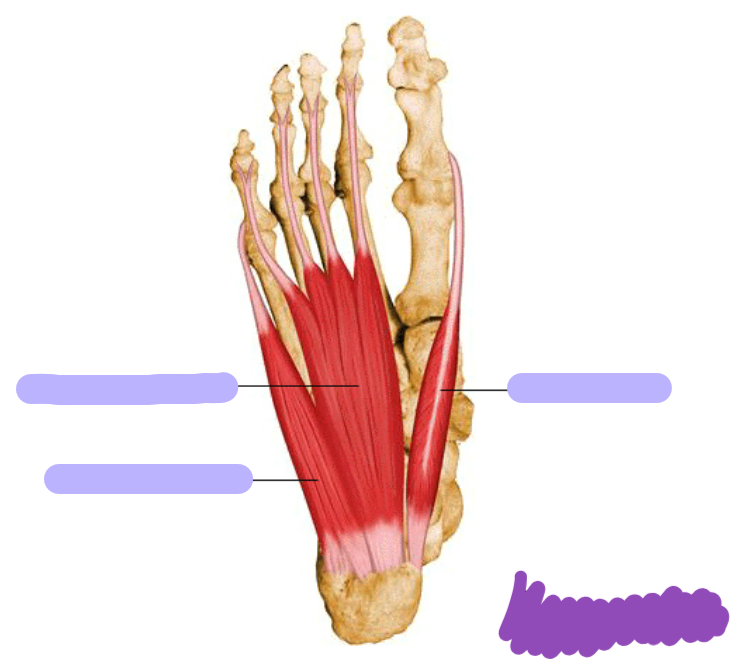
which layer?
layer 1 (abductor hallucis, flexor digitorum brevis, abductor digiti minimi)
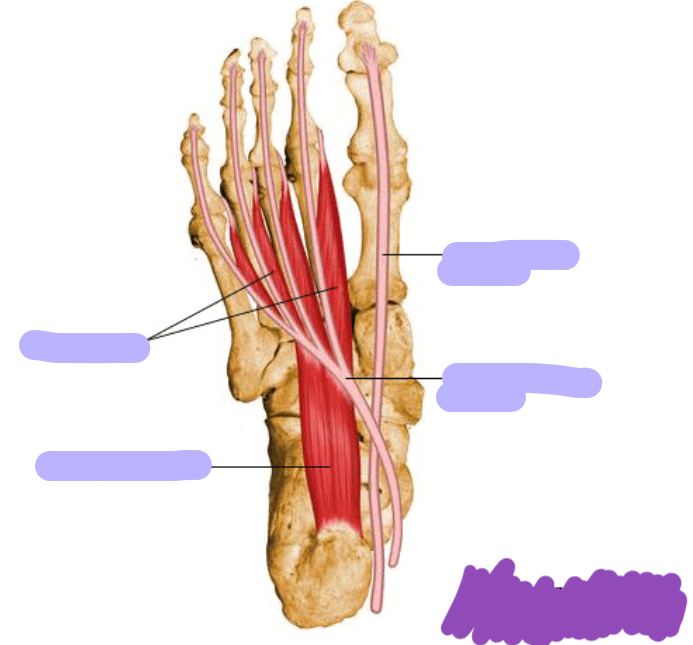
which layer?
layer 2 (quadratus plantae, lumbricals 1-4, flexor hallucis longus & flexor digitorum longus tendons)
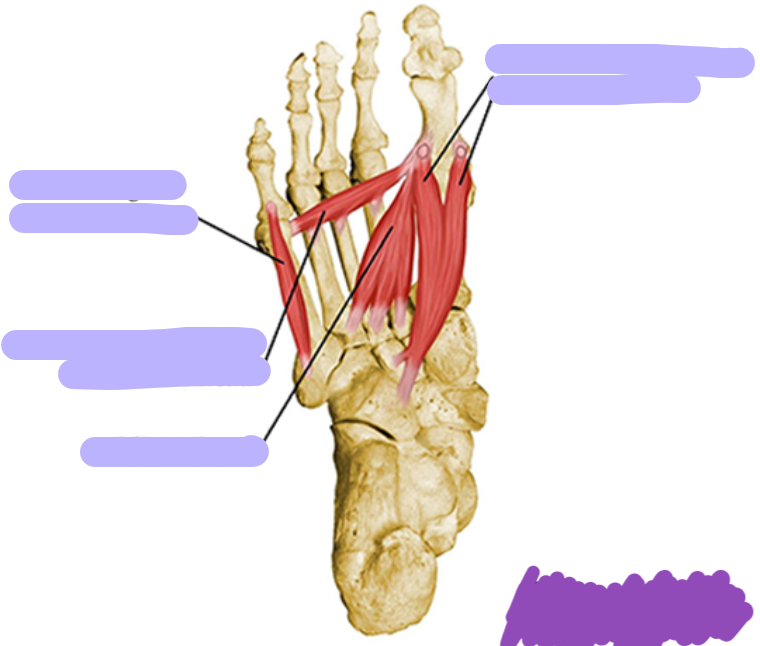
which layer?
layer 3 (flexor digiti minimi, adductor hallucis transverse and oblique heads, flexor hallucis brevis)
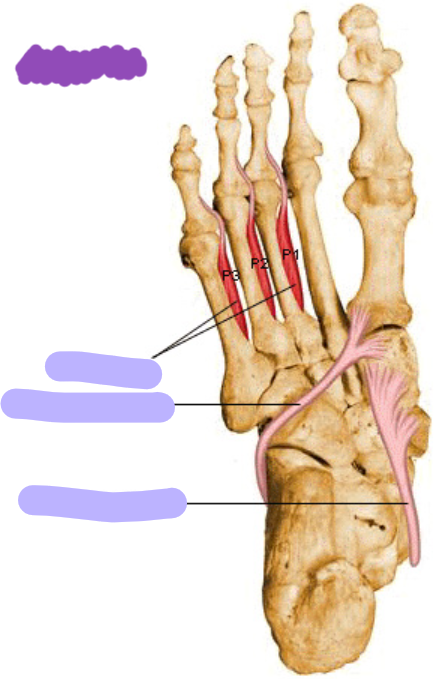
which layer?
layer 4 (plantar interossei and dorsal interossei)
keystone examples
navicular, calcaneus, talus
staples examples
short plantar ligament, long plantar ligament, calcaneonavicular ligament
tie beam examples
tendon of flexor hallucis longus
suspension examples
peroneus longus
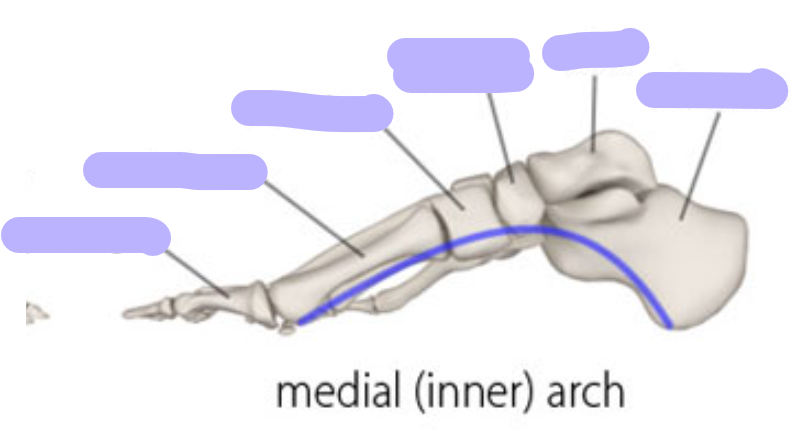
medial longitudinal arch
highest arch. calcaneus, talus, navicular, cuneiforms, first 3 metatarsals.
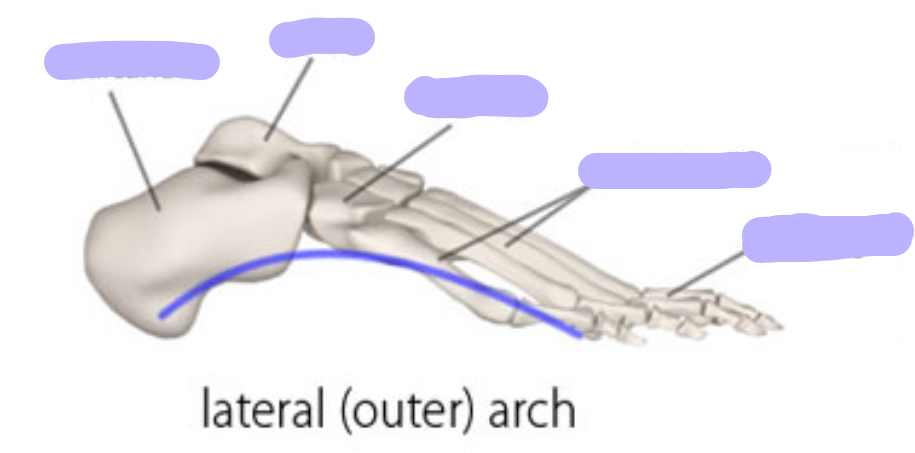
lateral longitudinal arch
calcaneus, cuboid, 4th and 5th metatarsals.

transverse arch of foot
cuboid, cuneiforms, bases of metatarsals. travels across foot.
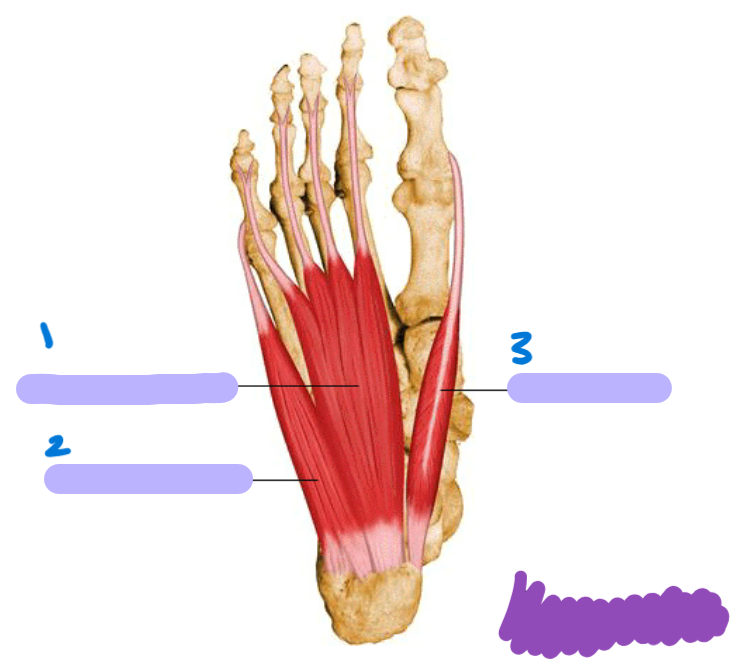
identify these muscles
flexor digitorum brevis
abductor digiti minimi
abductor hallucis

identify these muscles and tendons
lumbricles
quadratus plantae
flexor hallucis longus tendon
flexor digitorum longus tendon
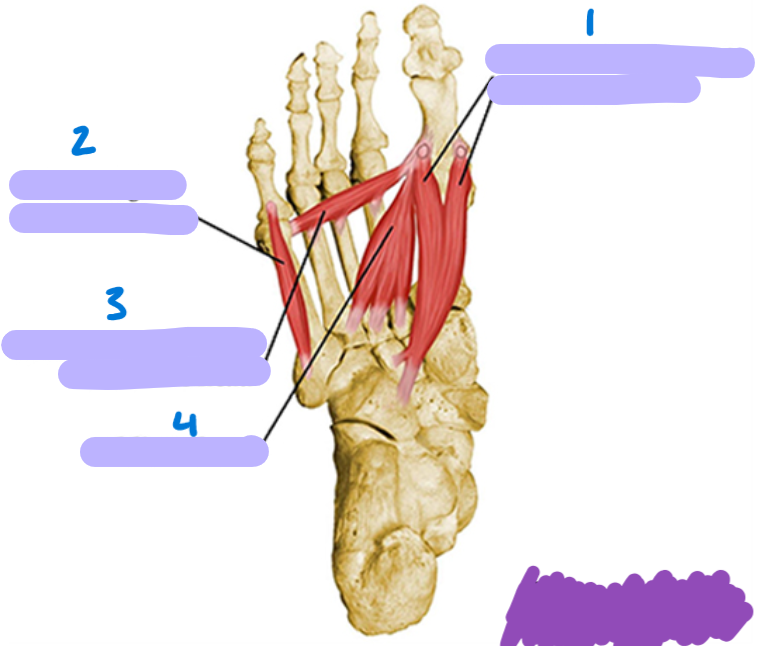
identify these muscles
flexor hallucis brevis
flexor digiti minimi brevis
adductor hallucis transverse head
adductor hallucis oblique head
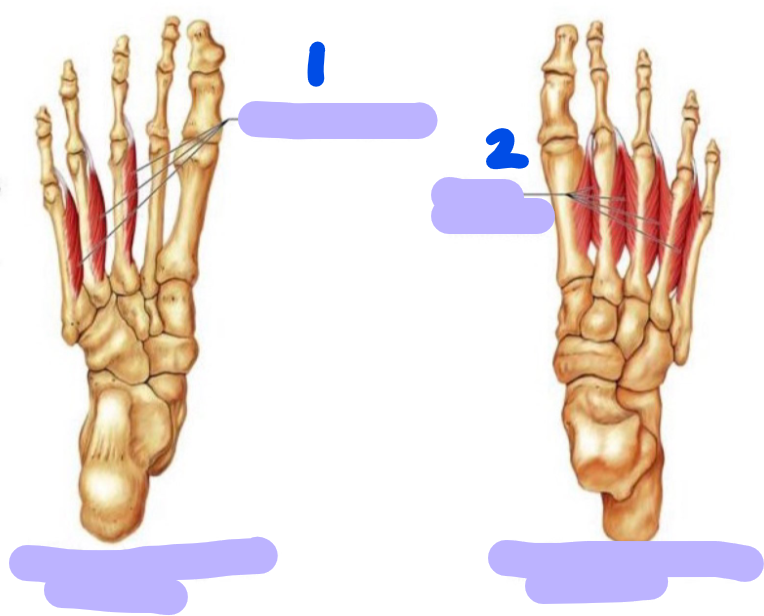
identify these muscles
plantar interossei (3PAd)
dorsal interossei (4DAb)
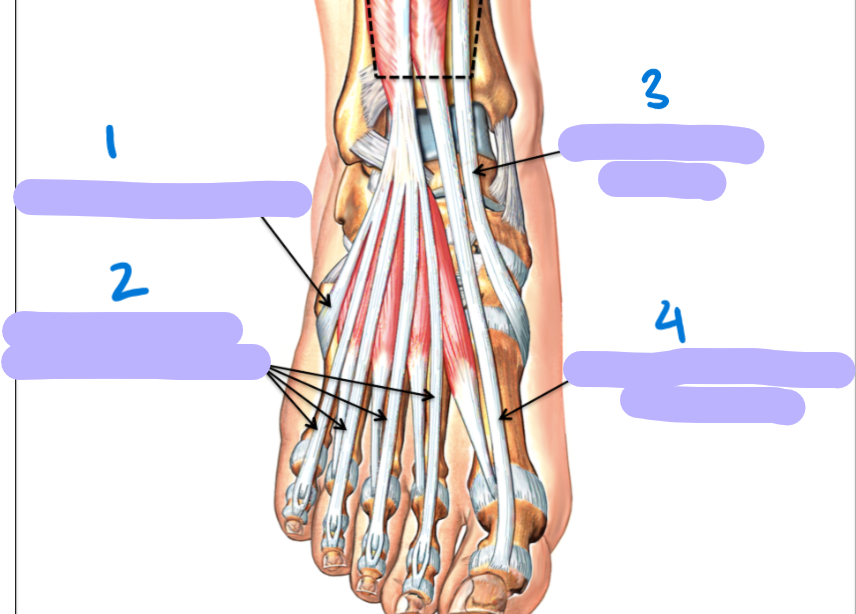
identify these tendons
peroneus tertius tendon
extensor digitorum longus tendon
tibialis anterior tendon
extensor hallucis longus tendon
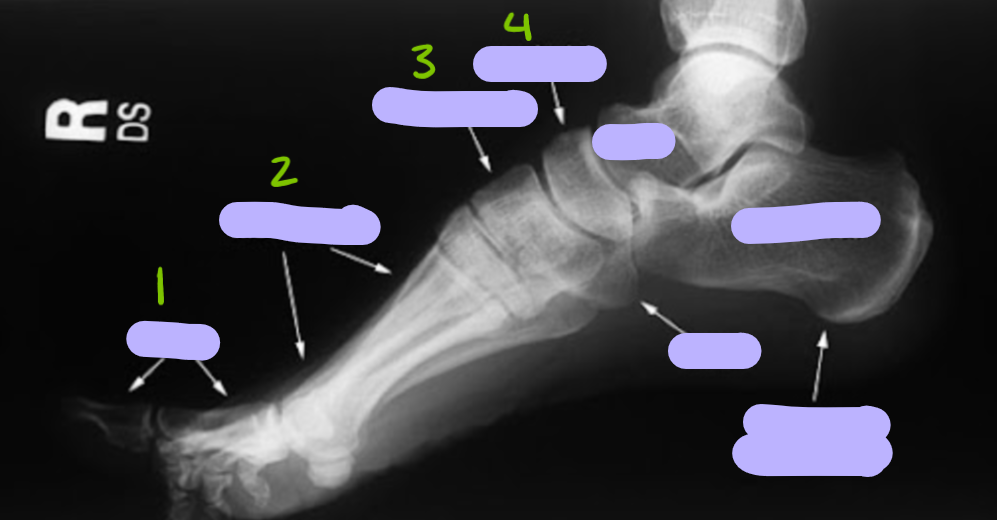
identify these bones
phalanges
metatarsals
cuneiforms
navicular

identify these bones and bony landmarks
talus
calcaneus
cuboid
calcaneal tuberosity
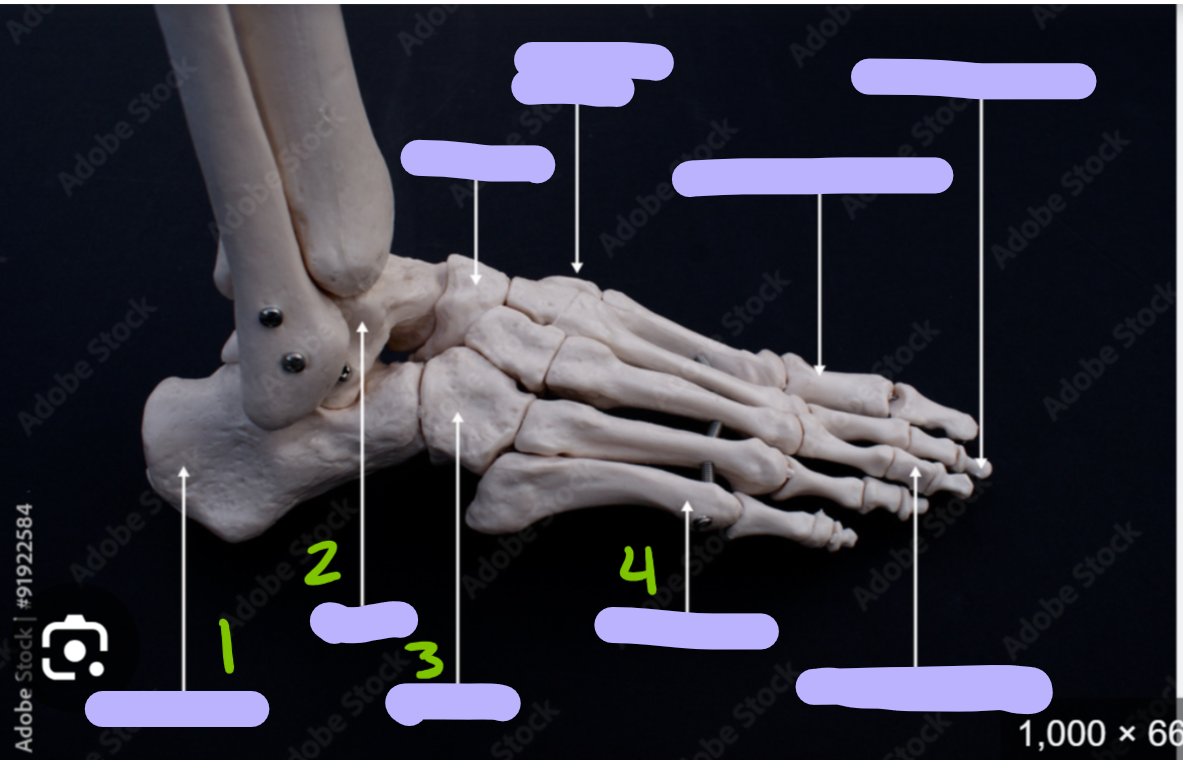
identify these bones
calcaneus
talus
cuboid
metatarsals

identify these bones
navicular
cuneiform
proximal phalanges
middle phalanges
distal phalanges

identify these joints
talocalcaneonavicular
subtalar
talocalcaneal
talocrural/ankle
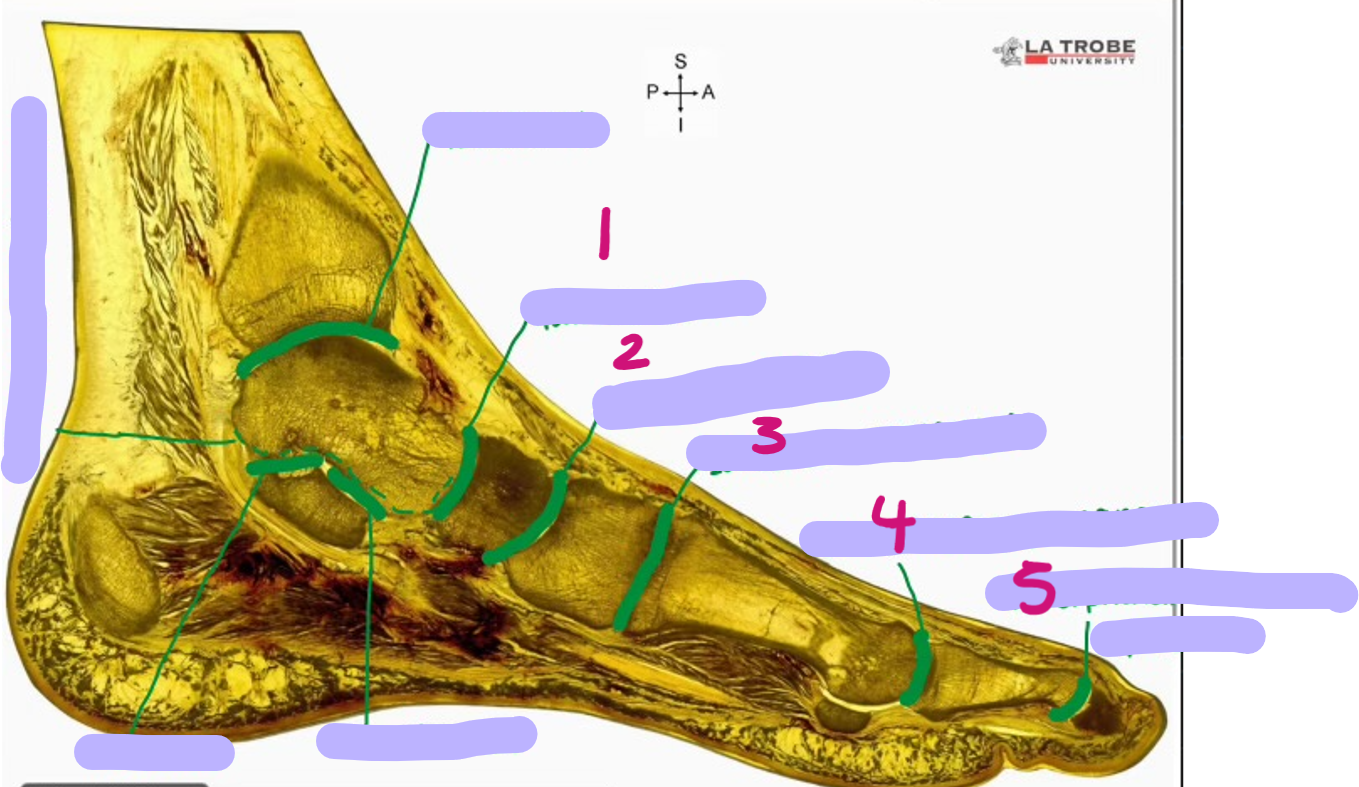
identify these joints
talonavicular joint
cuneonavicular joint
tarsometatarsal joint
metatarsophalangeal joint
proximal interphalangeal joint
(not shown in pic: distal interphalangeal joint is the last joint in toes 2-5)
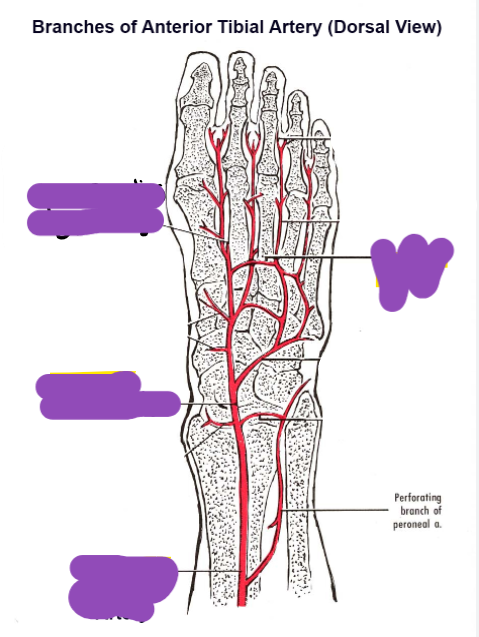
name the 4 main arteries of the foot
anterior tibial, dorsalis pedis, perforating, arcuate.
(Ants Taste Delicious Pies and Perform Acrobatics)
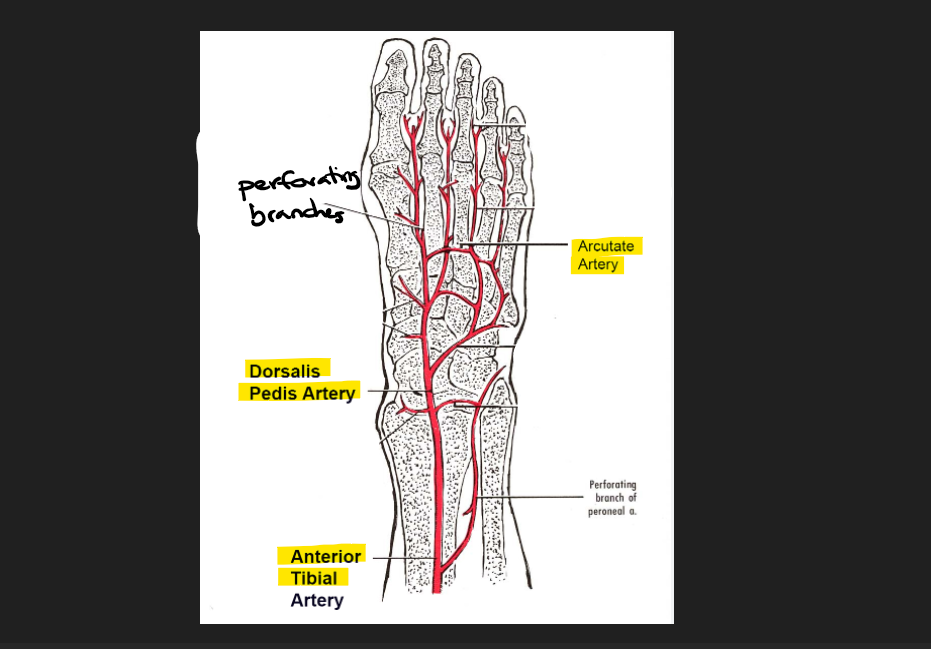
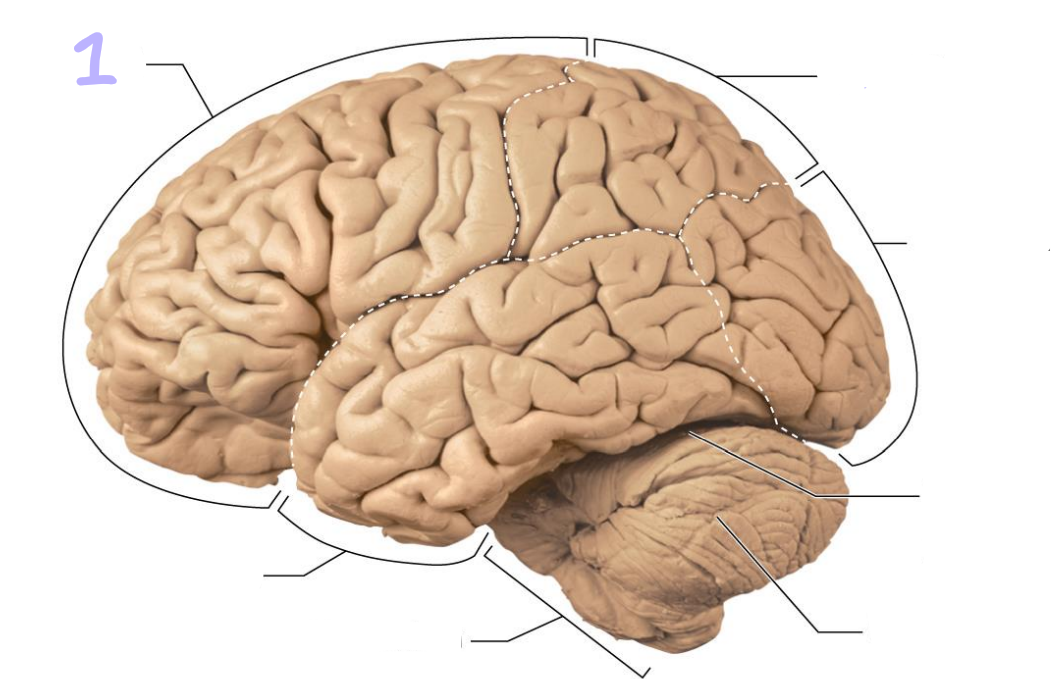
identify this lobe
frontal lobe
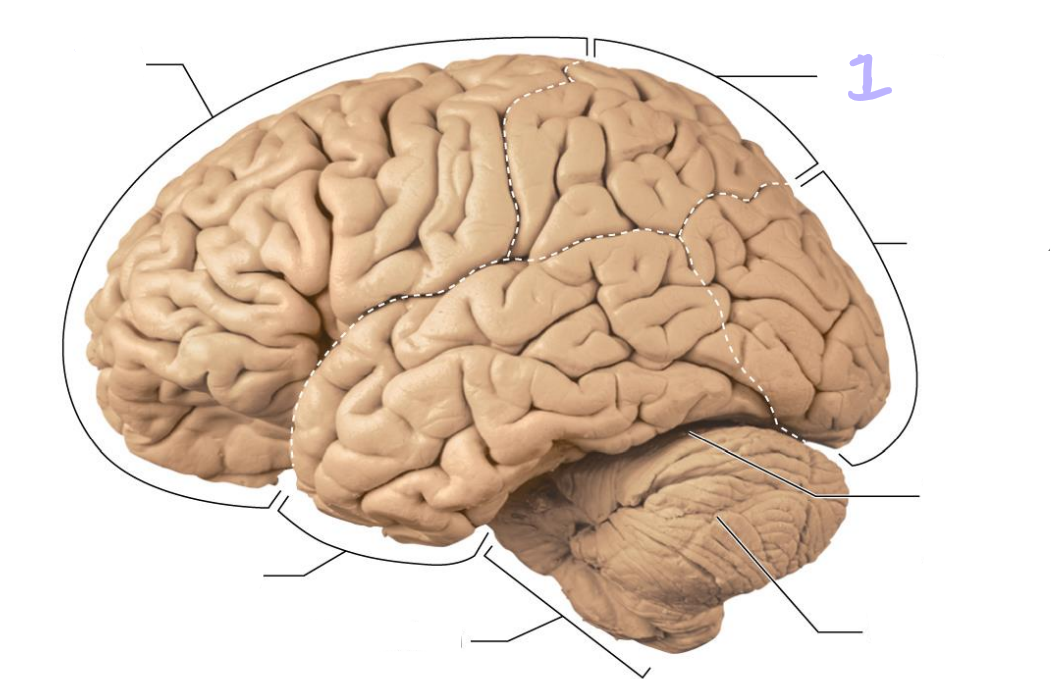
identify this lobe
parietal lobe
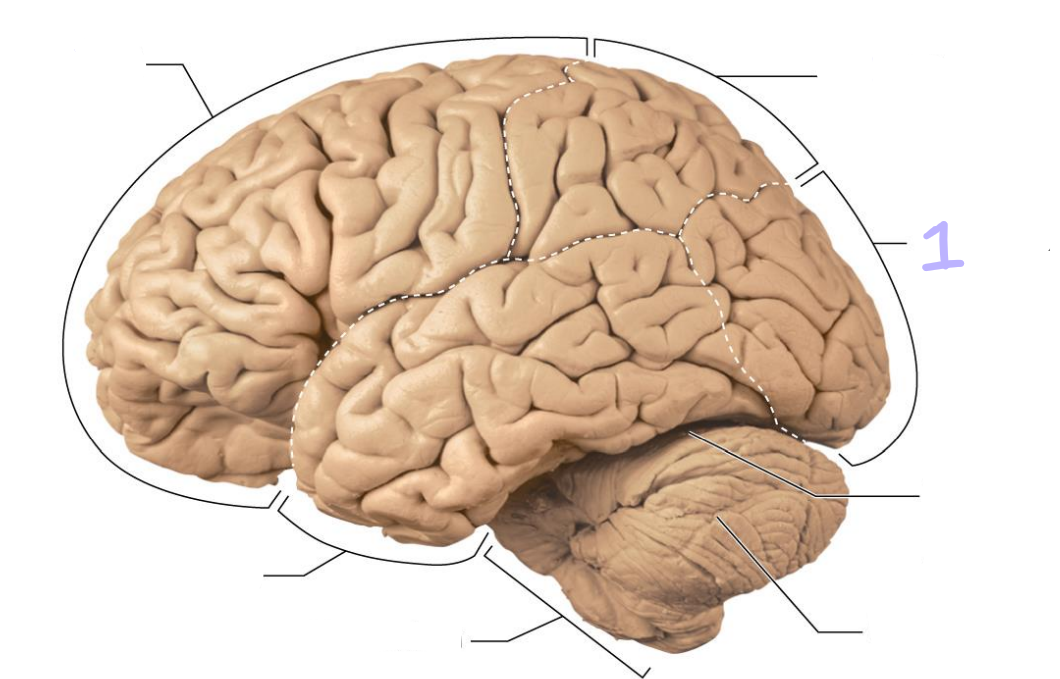
identify this lobe
occipital lobe
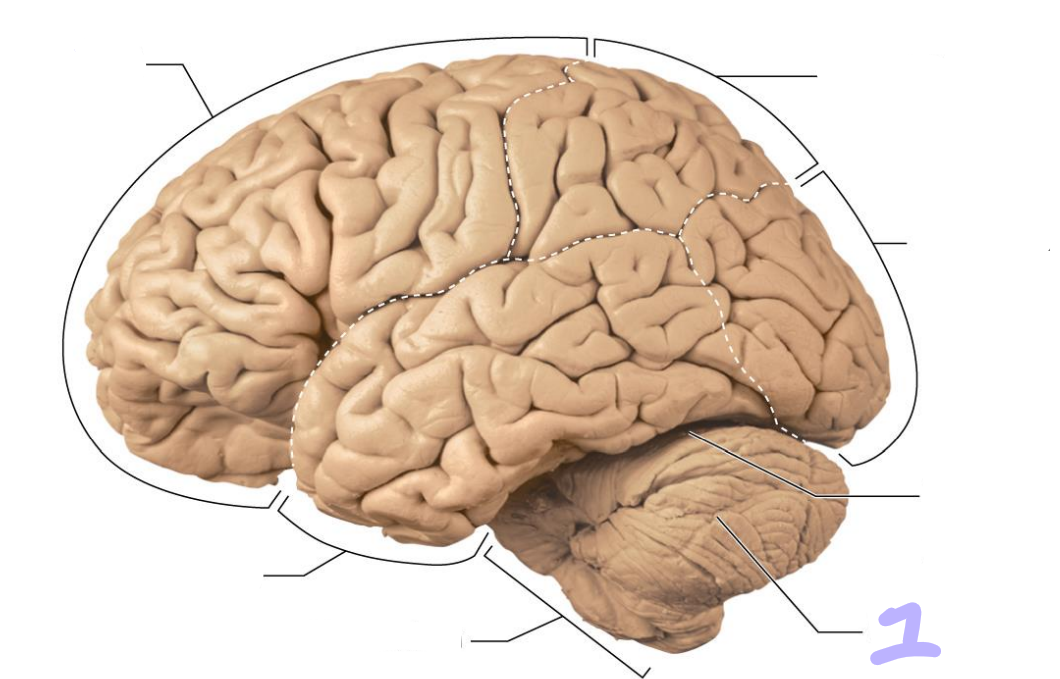
identify this structure
cerebellum
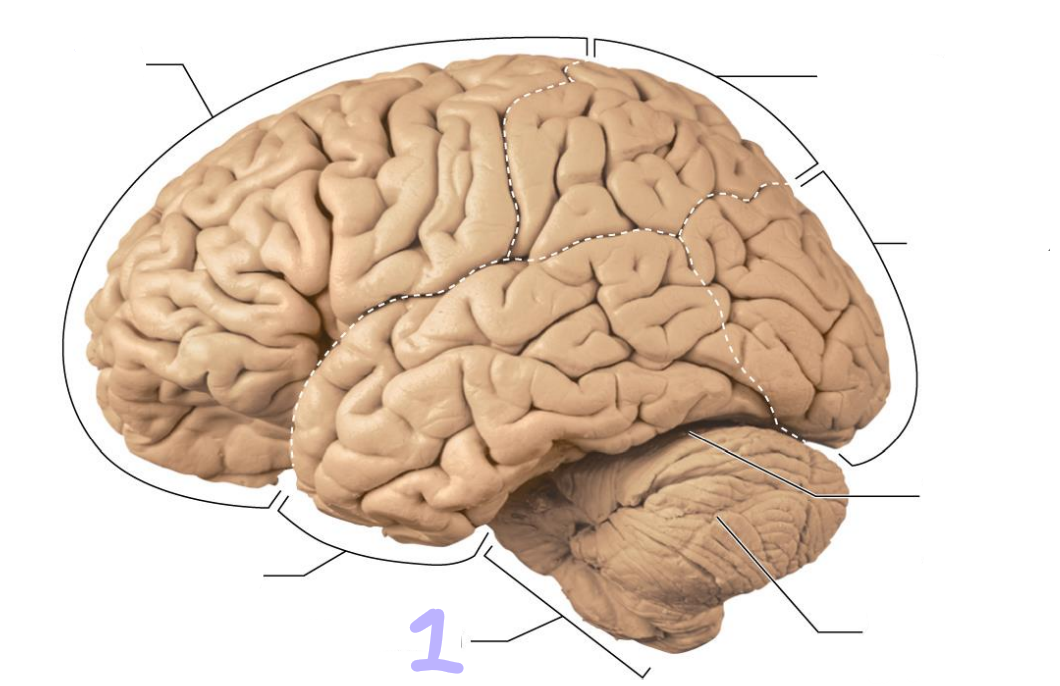
identify this structure
brain stem

identify this lobe
temporal lobe
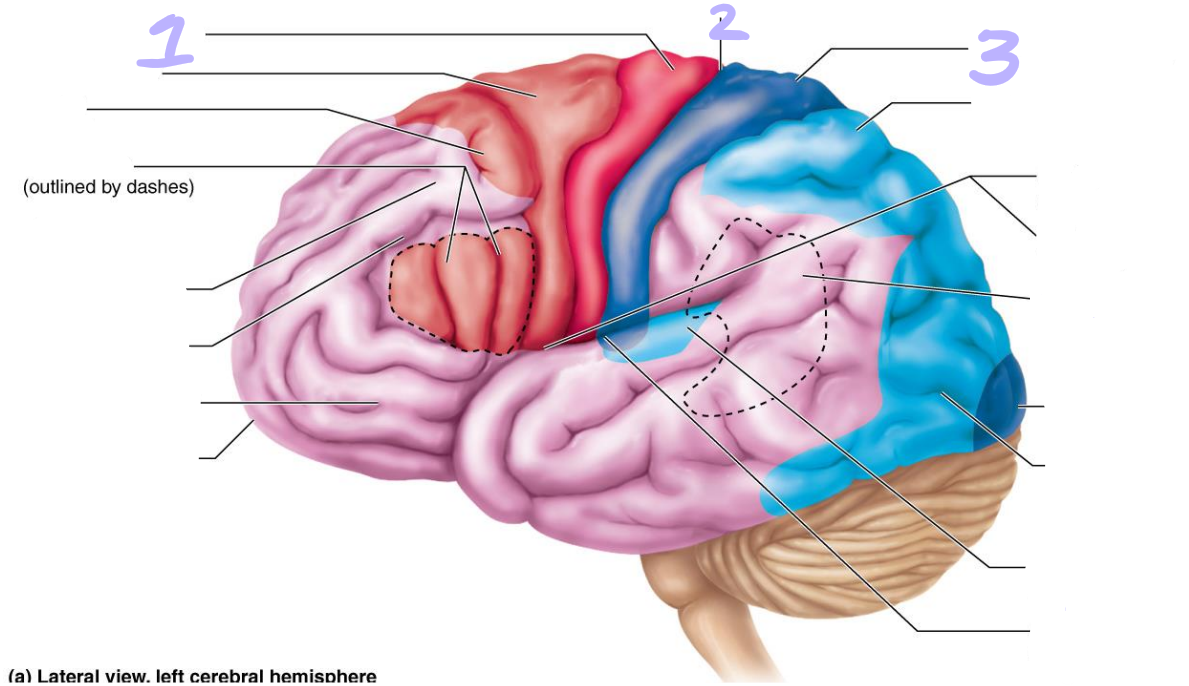
identify these structures
precentral gyrus/primary motor cortex
central sulcus
postcentral gyrus/primary somatosensory cortex
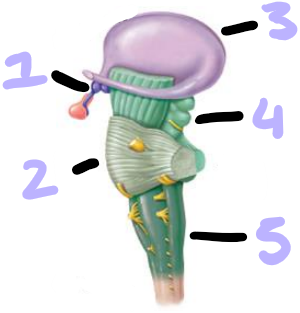
identify these sections of the brainstem
hypothalamus
pons
thalamus
midbrain
medulla oblongata
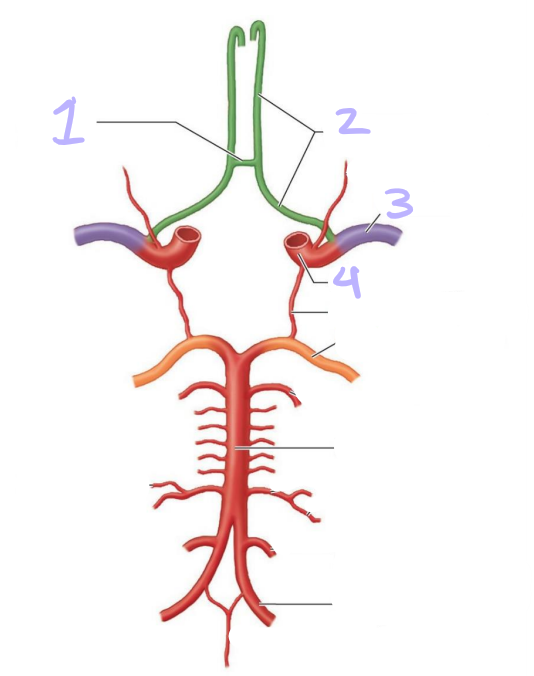
identify these arteries
anterior communicating
anterior cerebral
middle cerebral
internal carotid
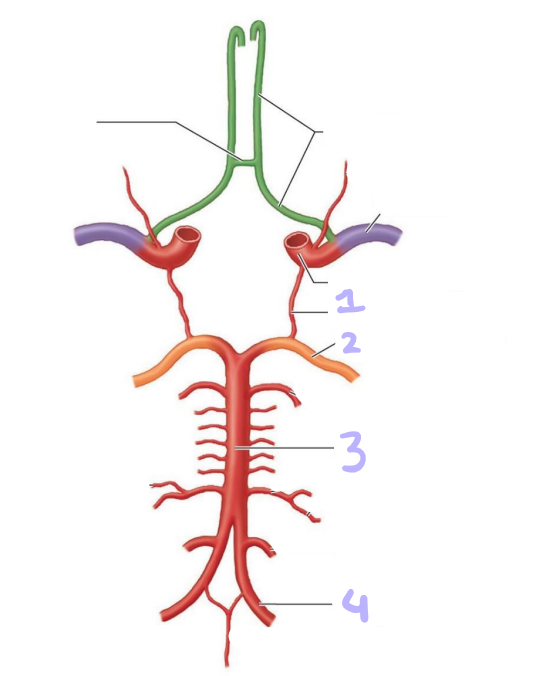
identify these arteries
posterior communicating
posterior cerebral
basilar
vertebral
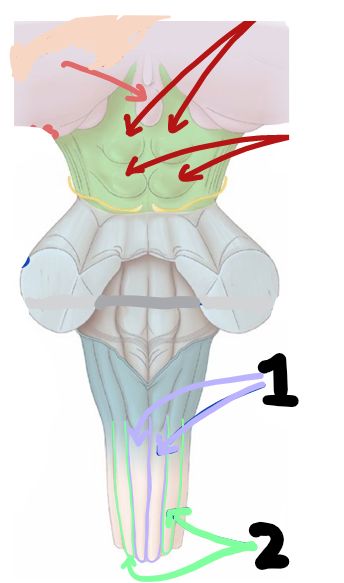
identify structures 1&2
gracile tubercles
cunate tubercles
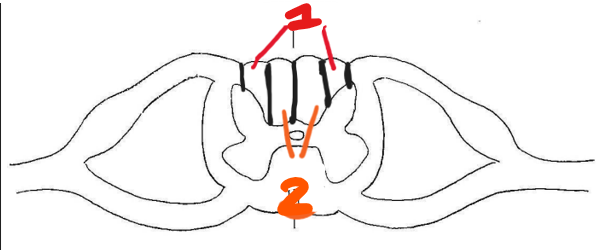
identify structures 1&2
fasciculus cuniatus
fasciculus gracilis
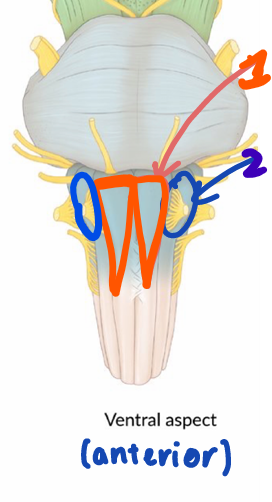
identify 1&2
pyramids
olives
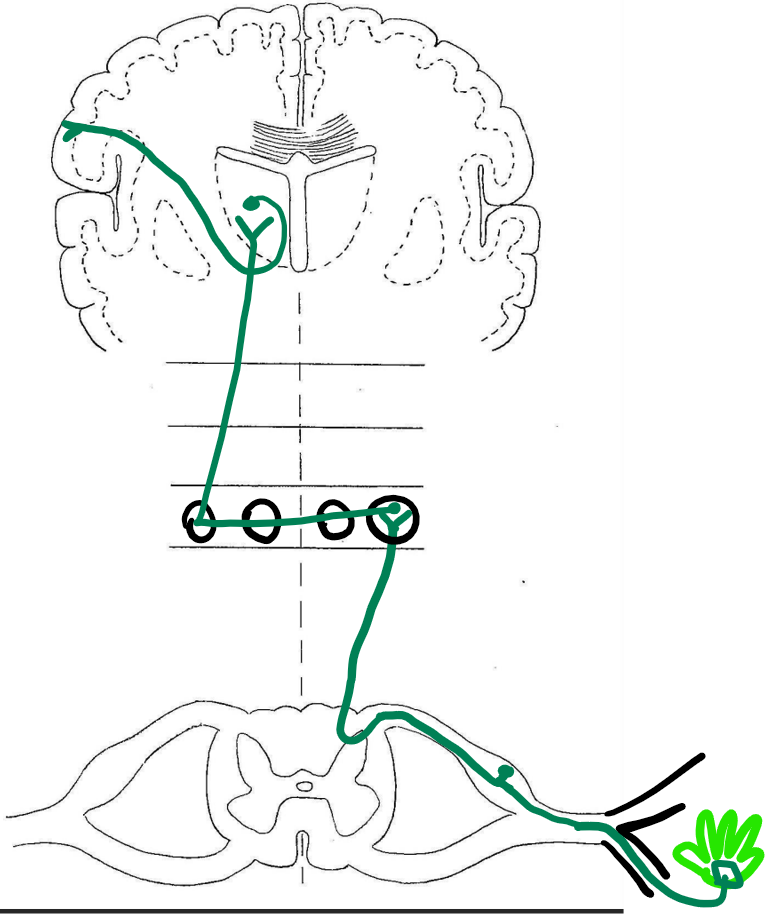
which sensory pathway is displayed here?
dorsal column medial lemniscus (general sensation)
where is the cell body of the 1st order neuron (GSA) located in the DCML pathway?
dorsal root ganglion

where is the cell body of 2nd order neuron located in the DCML pathway?
tubercles
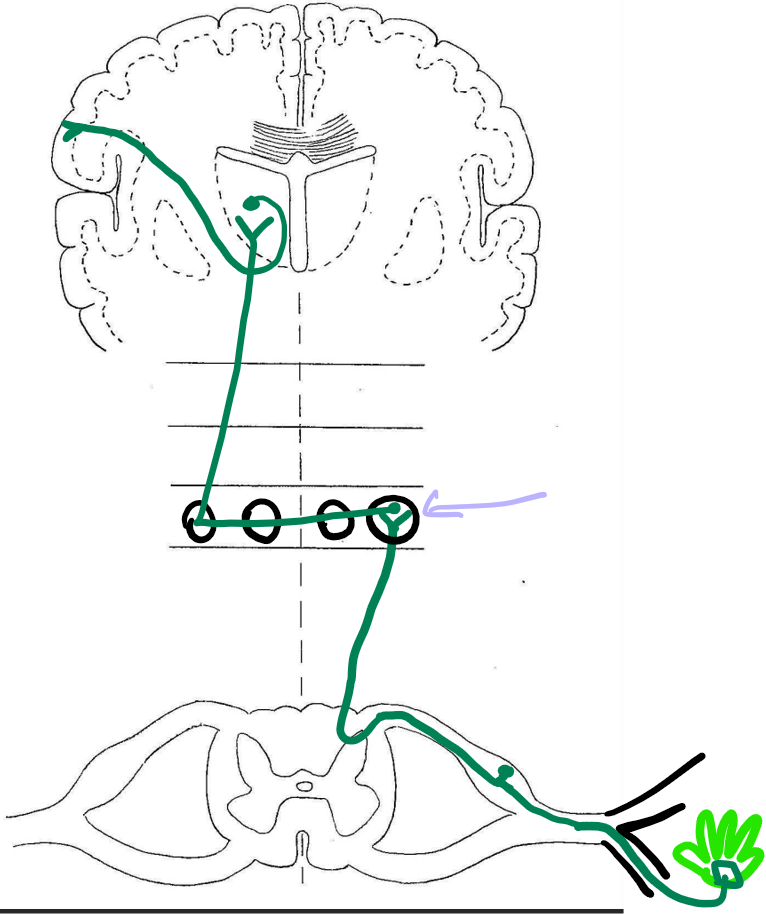
where is the cell body of 3rd order neuron located in the DCML pathway?
thalamus
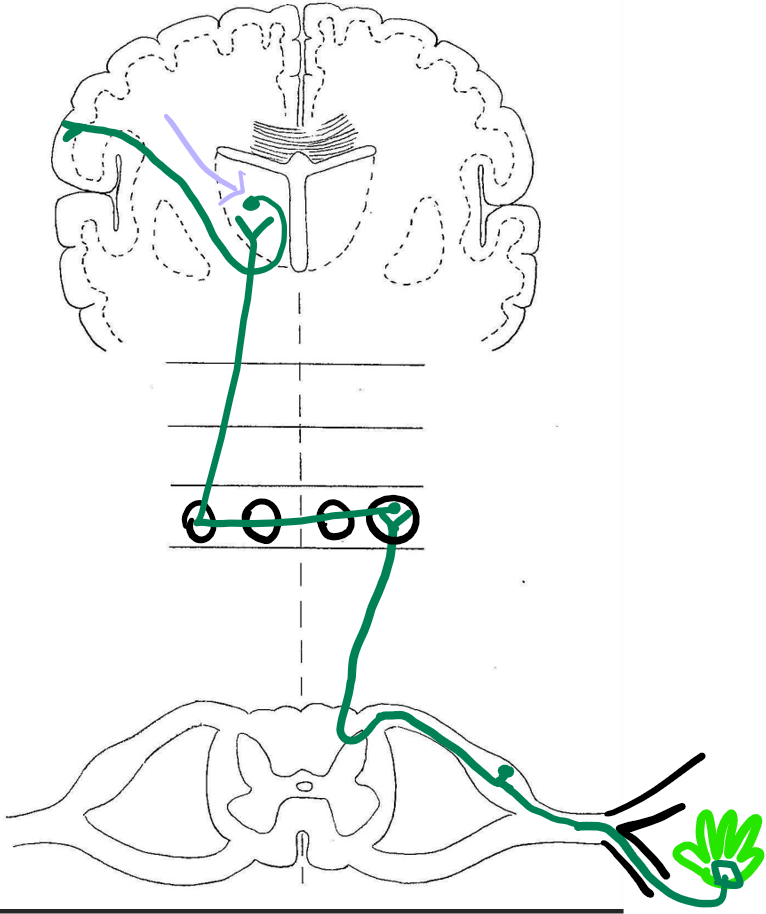

the tubercle/fasciculus that the neuron travels through in the DCML pathway, depending on location of original receptor. 1&2?
cunate
gracile
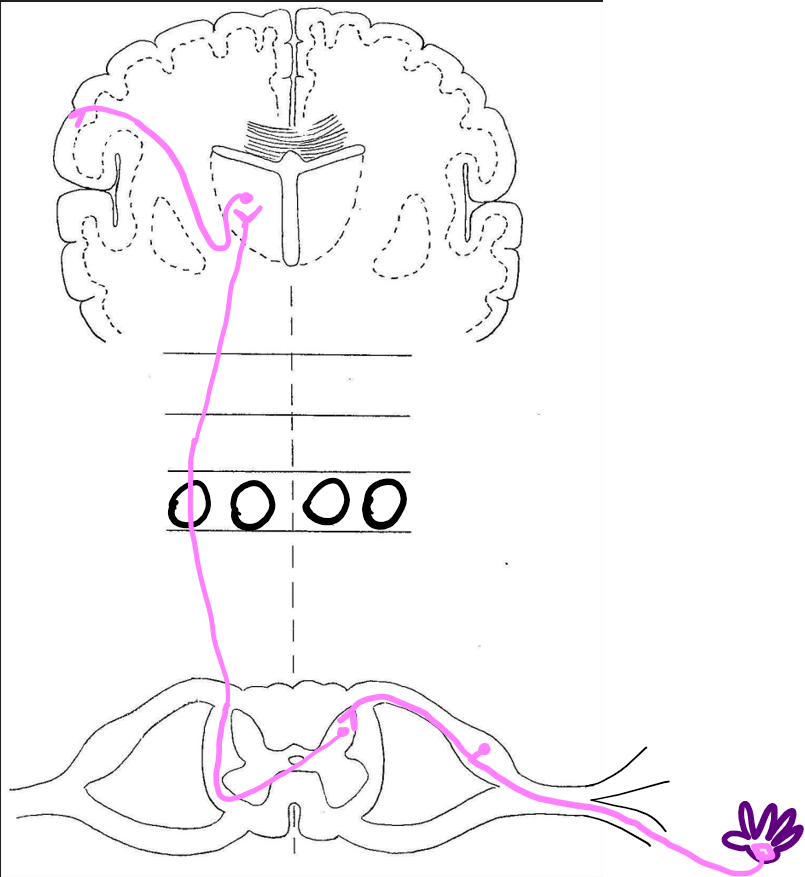
which sensory pathway is displayed here?
lateral spinal thalamic pathway (pain and temperature)
where is the cell body of the 1st order neuron located in the lateral spinothalamic pathway?
dorsal root ganglion
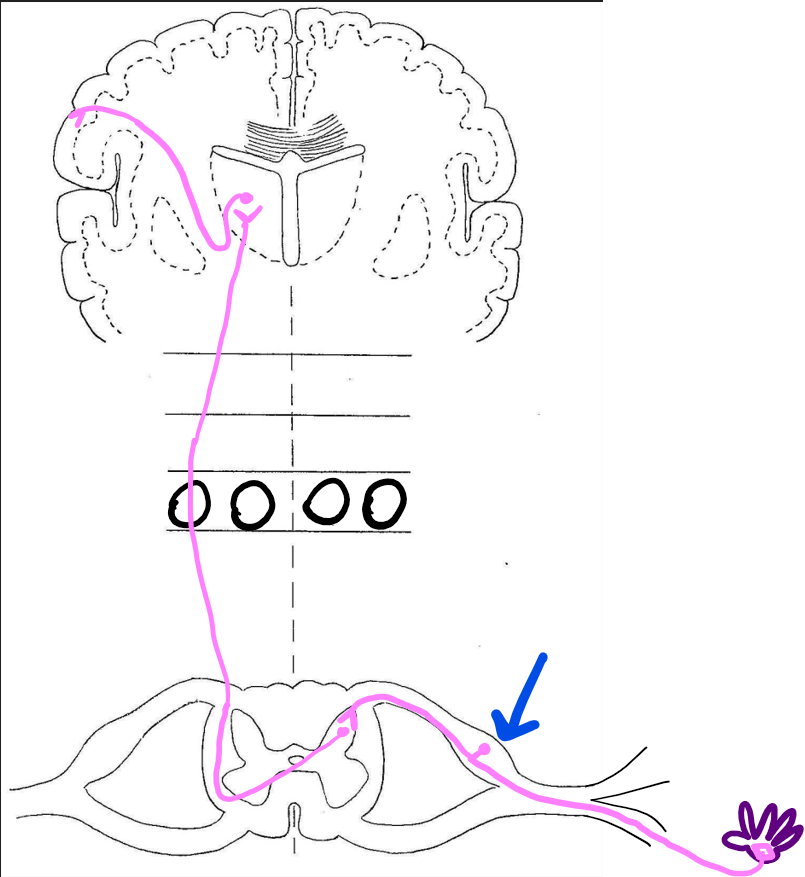
where is the cell body of the 2nd order neuron located in the lateral spinothalamic pathway?
the dorsal horn
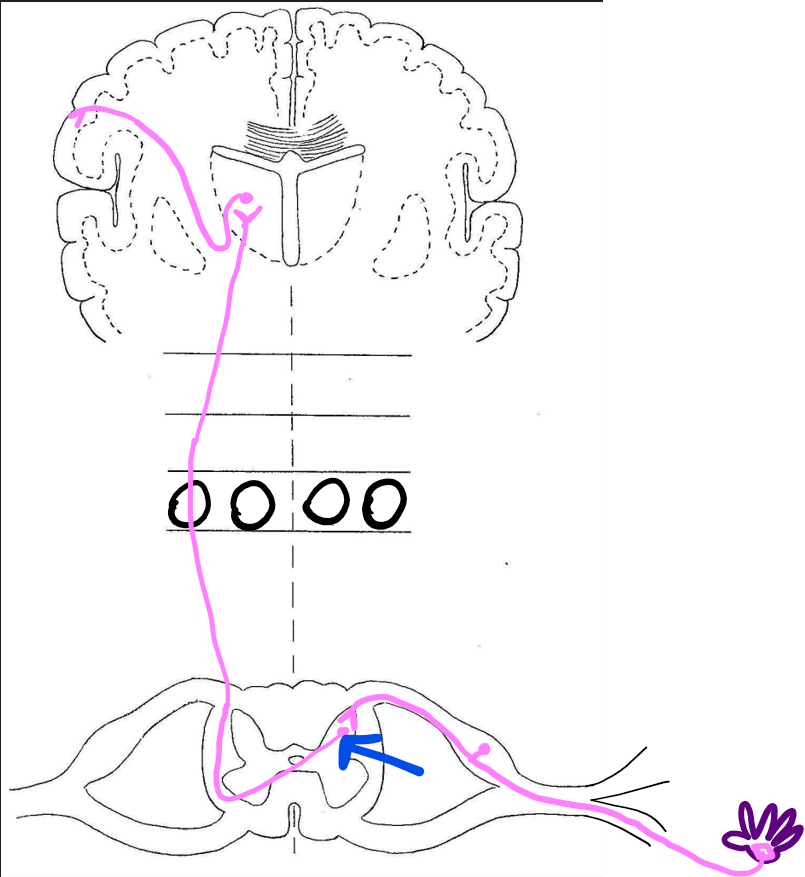
where is the cell body of the 3rd order neuron located in the lateral spinothalamic pathway?
thalamus
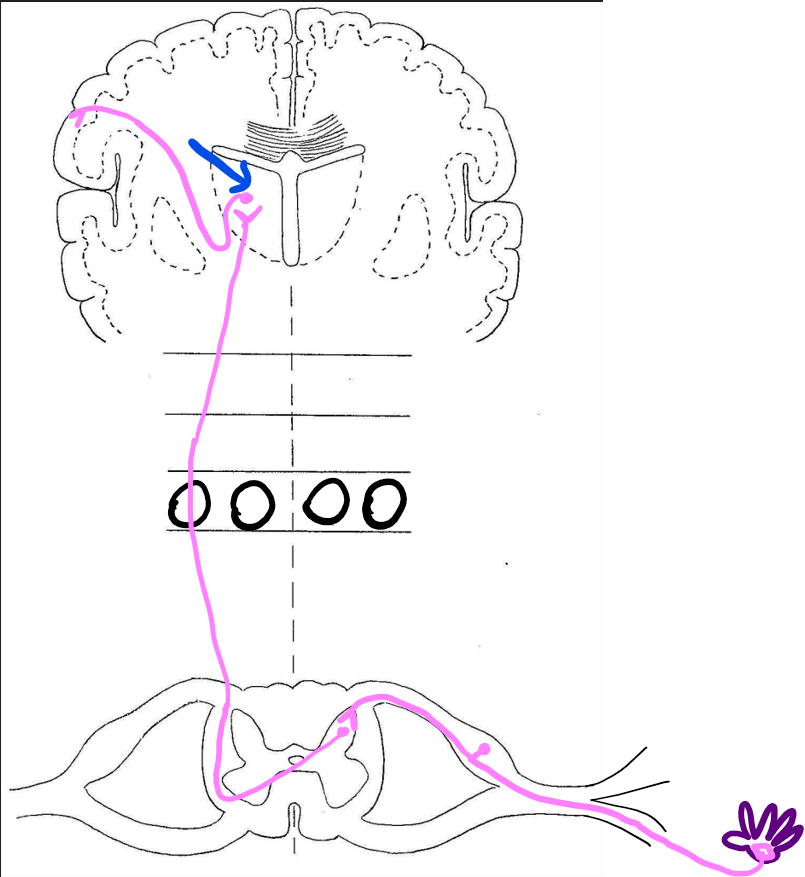

what pathway is this?
lateral corticospinal pathway (motor pathway)
where is the cell body of the lower motor neuron located in the lateral corticospinal pathway?
the ventral horn

where is the cell body of the upper motor neuron located in the lateral corticospinal pathway?
primary motor cortex
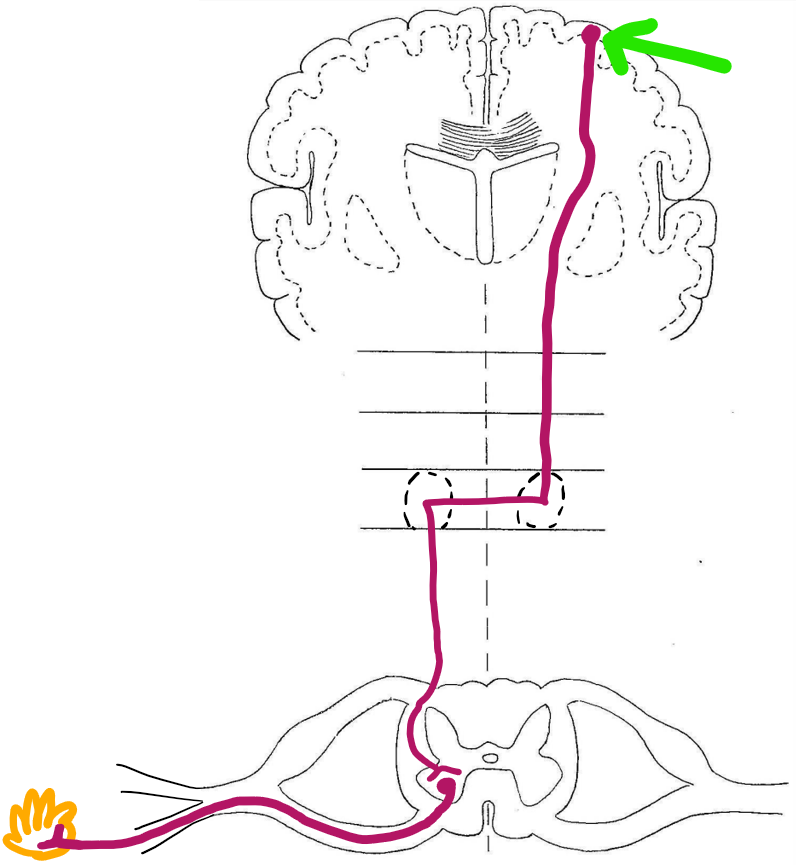
where does decussation occur in the lateral corticospinal pathway?
in the pyramids. pyramidal decussation.

where does decussation occur in the dorsal column ML pathway, and with which order neuron?
the tubercles. 2nd order neuron.
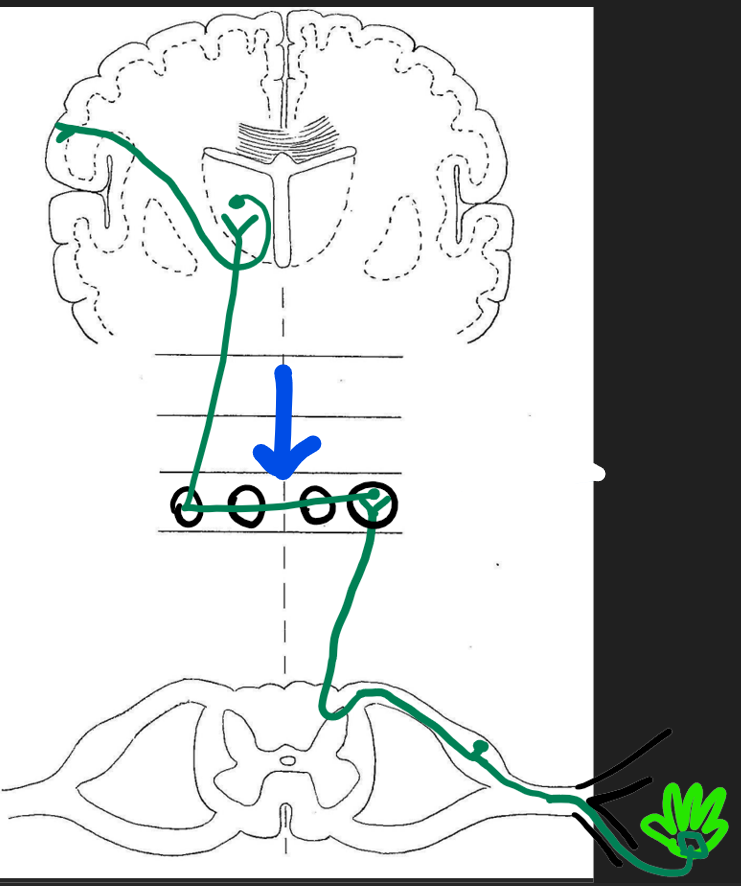
where does decussation occur in the lateral spinothalamic pathway, and with which order neuron?
at level of spinal cord. 2nd order neuron.
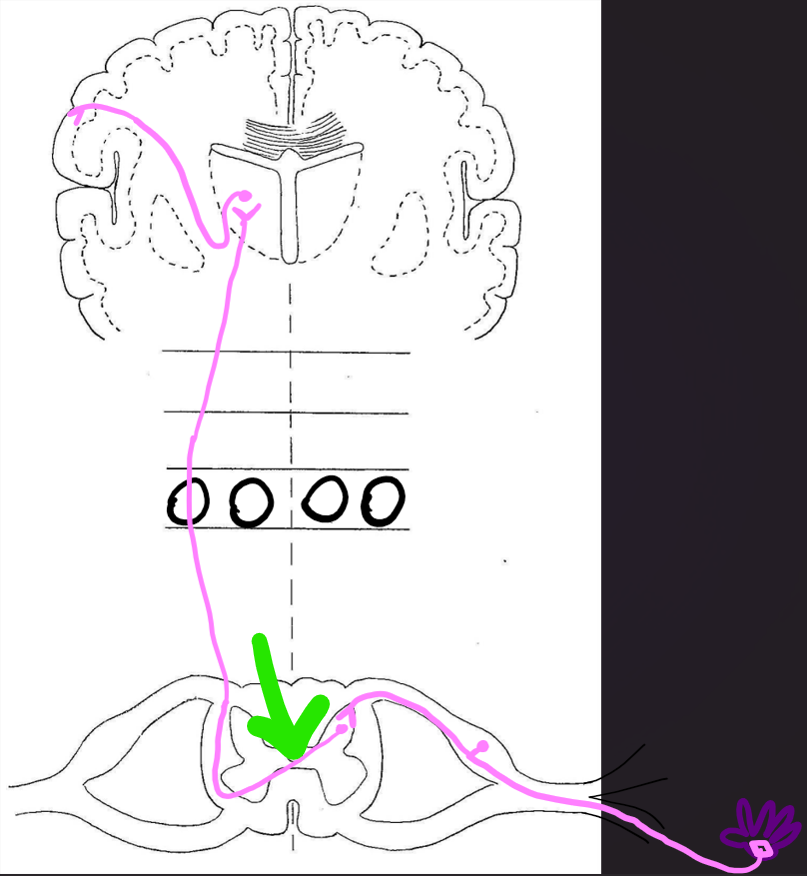
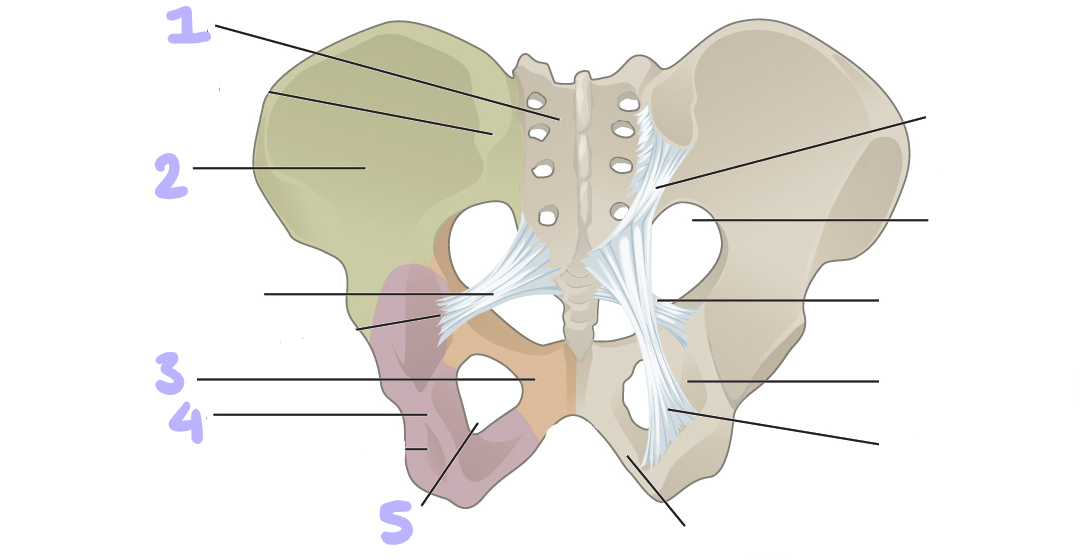
identify structures 1-5
sacrum
ilium
pubis
ischium
obturator foramen
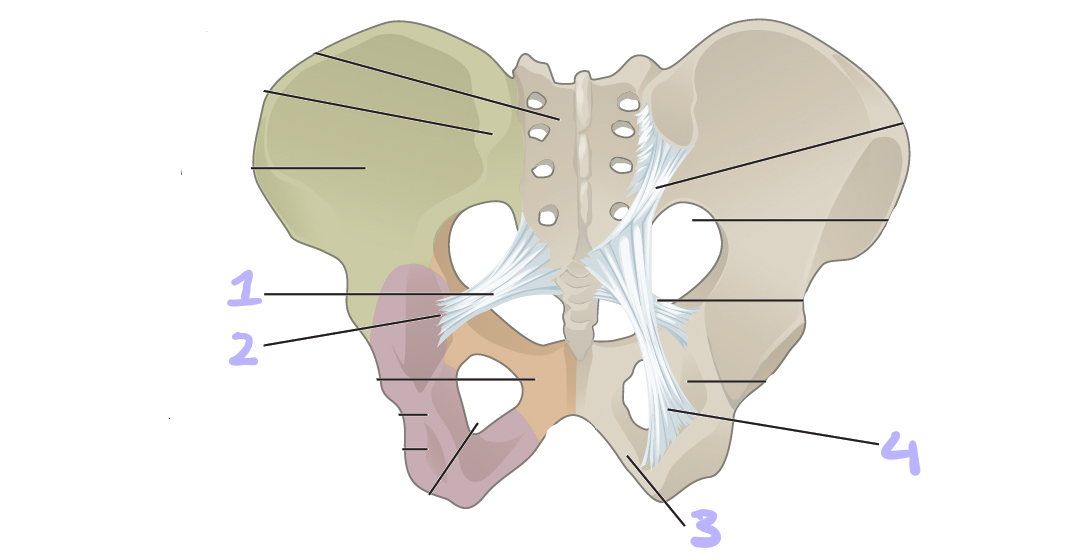
identify structures 1-4
sacrospinous ligament
ischial spine
ischiopubic ramus
sacrotuberous ligament
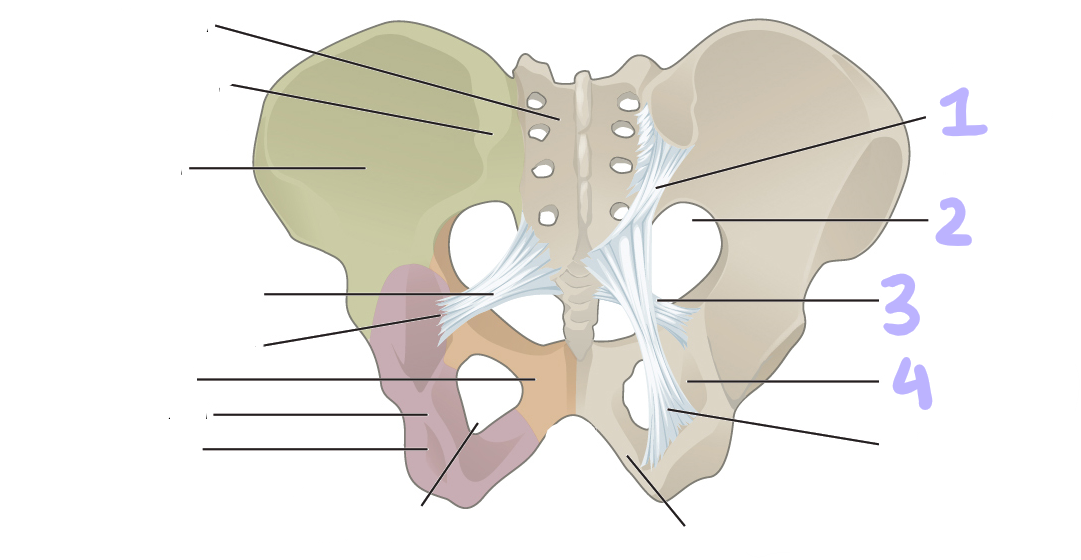
identify structures 1-4
posterior sacroiliac ligament
greater sciatic foramen
sacrospinous ligament
lesser sciatic foramen
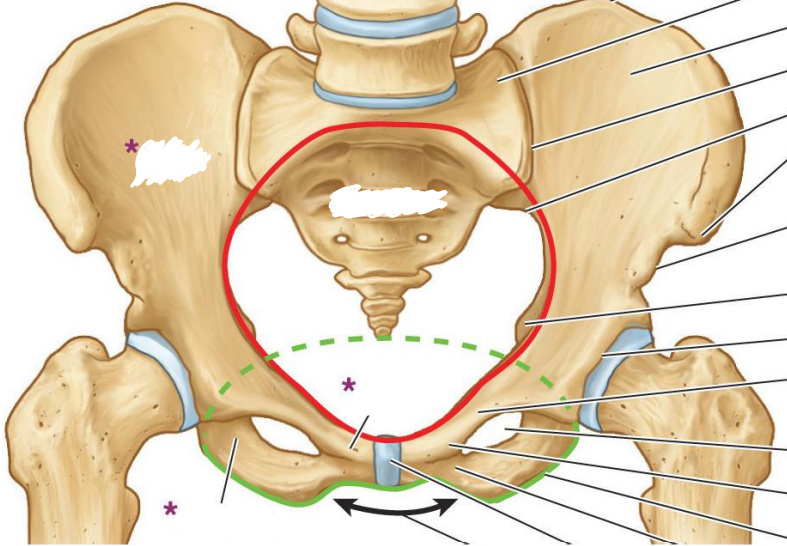
identify the RED and GREEN structures
red = pelvic inlet
green = pelvic outlet
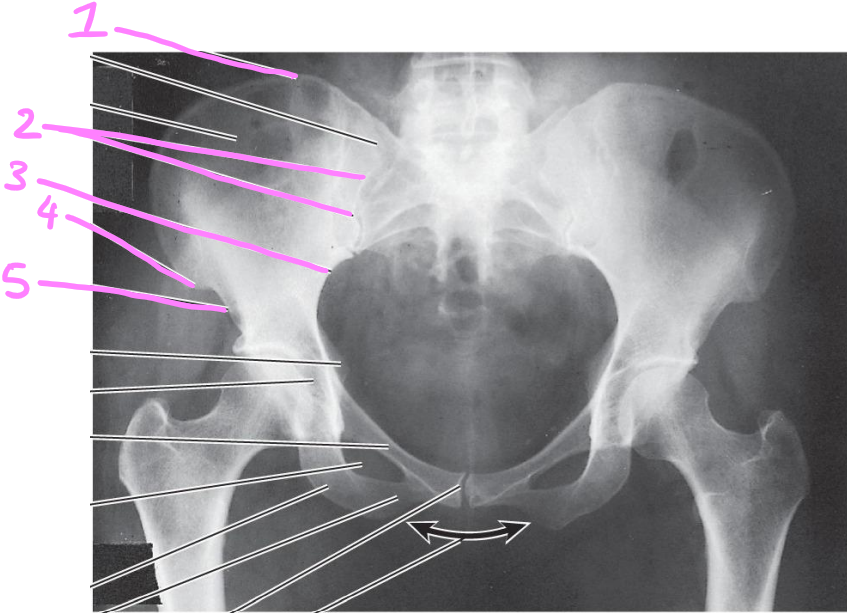
identify structures 1-5
iliac crest
sacro-iliac joint
pelvic brim
anterior superior iliac spine (ASIS)
anterior inferior iliac spine (AIIS)
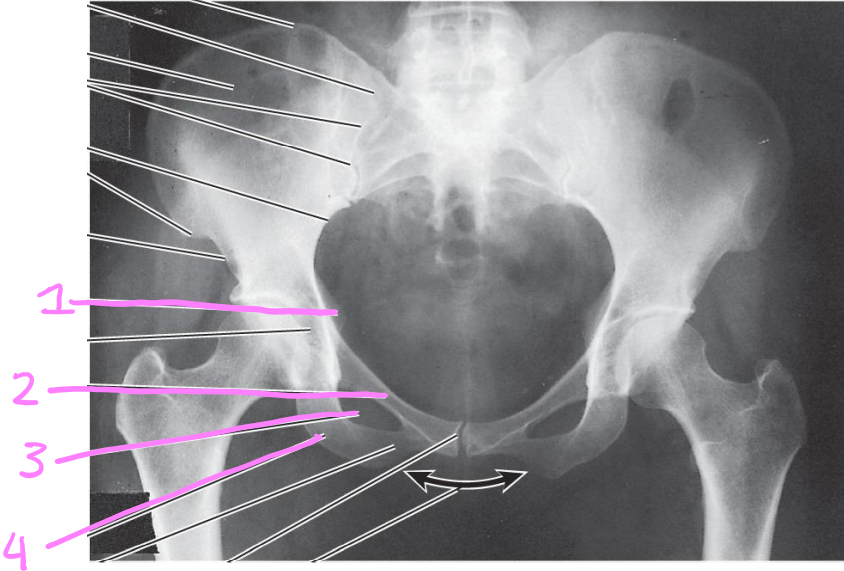
identify structures 1-4
ischial spine
superior ramus of pubis
obturator foramen
ischial tuberosity
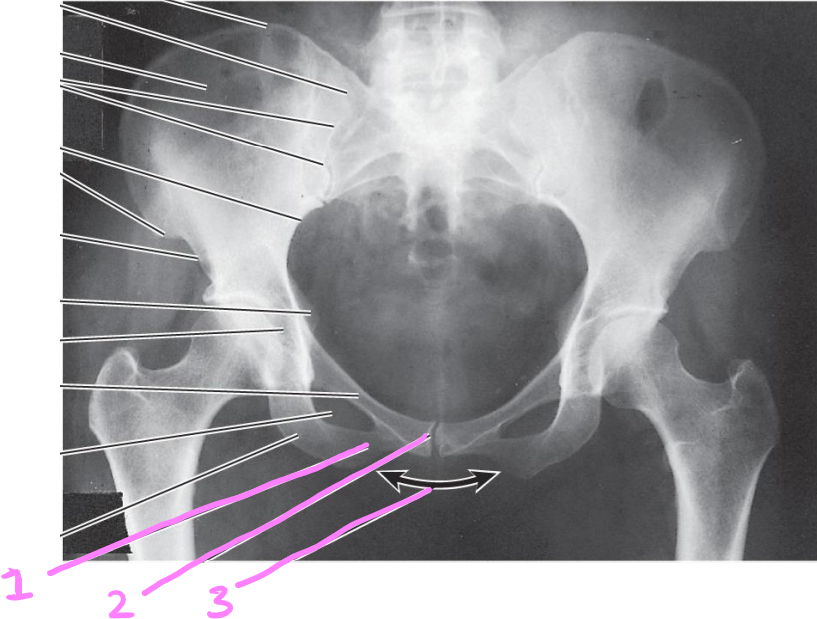
identify structures 1-3
inferior ramus of pubis
pubic symphysis
pubic arch
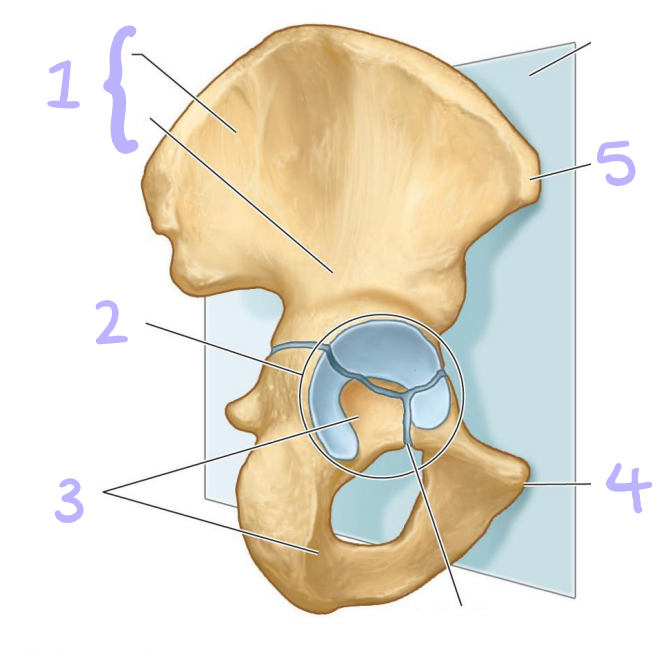
identify structures 1-5
ilium
acetabulum
ischium
pubic crest
anterior superior iliac spine (ASIS)
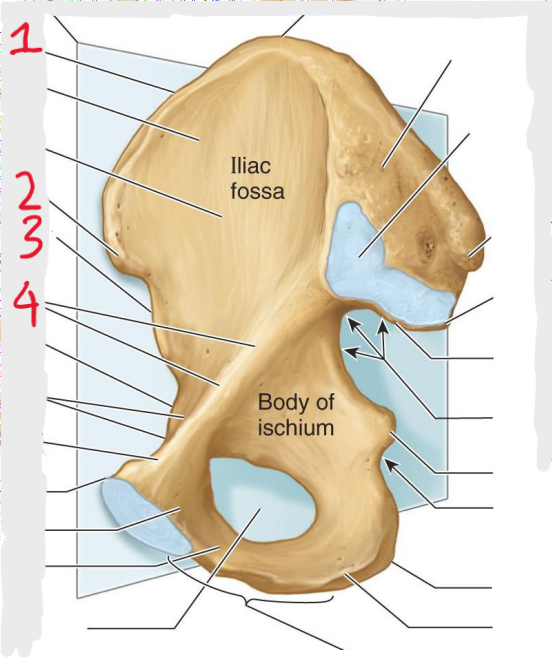
identify structures 1-4
iliac crest
anterior superior iliac spine (ASIS)
anterior inferior iliac spine (AIIS)
arcuate line

identify structures 1-5
superior ramus of pubis
pubic crest
body of pubis
inferior ramus of pubis
obturator foramen

identify structures 1-5
ischial spine
lesser sciatic notch
ischial tuberosity
ischial ramus
ischiopubic ramus
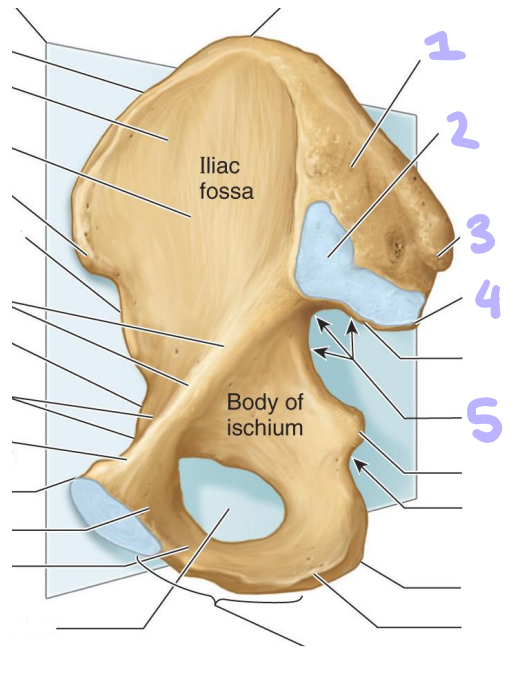
identify structures 1-5
ilium tuberosity
auricular surface
posterior superior iliac spine (PSIS)
posterior inferior iliac spine (PIIS)
greater sciatic notch
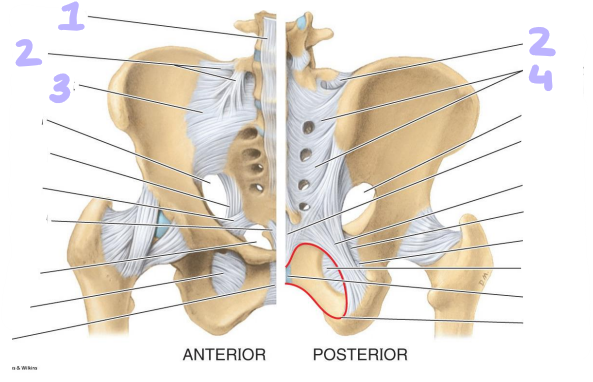
identify ligaments 1-4
anterior longitudinal ligament
iliolumbar ligament
anterior sacro-iliac ligament
posterior sacro-iliac ligament
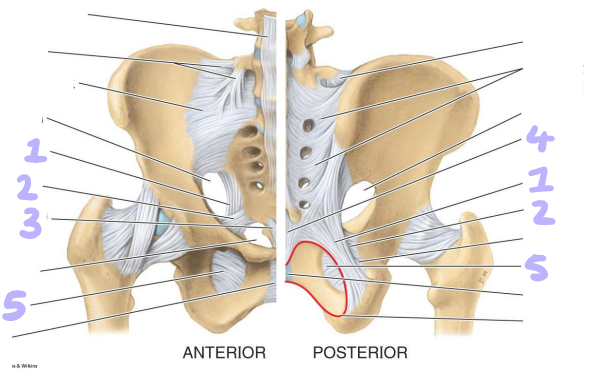
identify structures 1-5
sacrotuberous ligament
sacrospinous ligament
anterior sacrococcygeal ligament
posterior sacrococcygeal ligament
obturator membrane
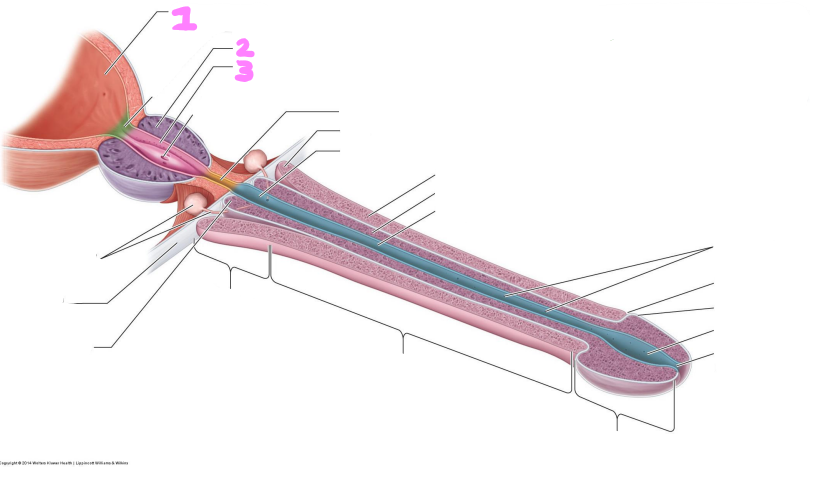
identify structures 1-3
urinary bladder
prostate
prostatic urethra
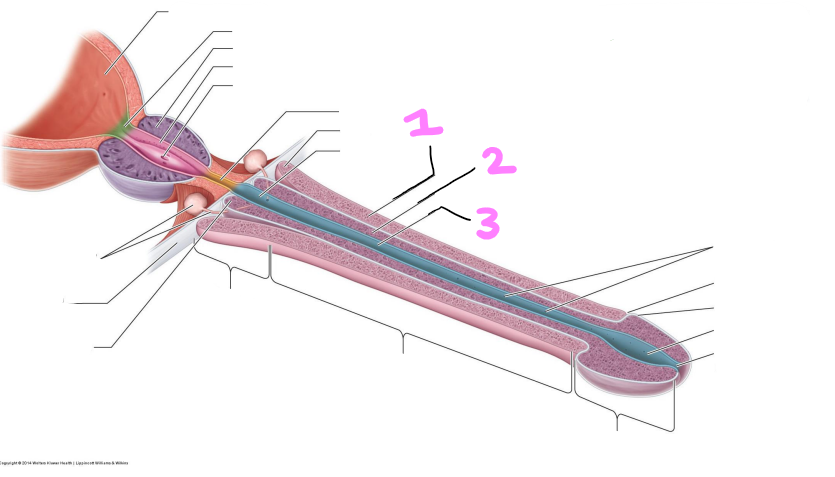
identify structures 1-3
corpus cavernosum
corpus spongiosum
spongy urethra

identify structures 1-3
root of penis
body of penis
glans penis
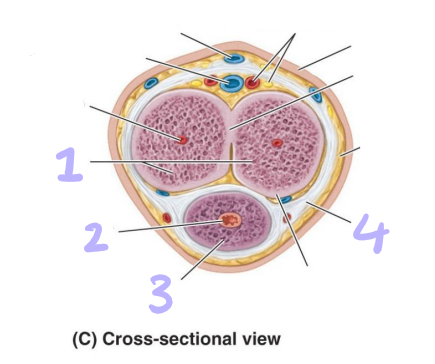
identify structures 1-4
corpora cavernosa
spongy urethra
corpus spongiosum
deep fascia
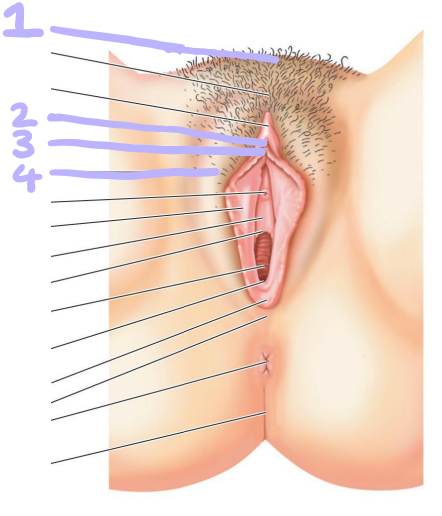
identify structures 1-4
mons pubis
glans clitoris
frenulum of clitoris
labium majus

identify structures 1-5
external urethral orifice
labium minus
vaginal orifice
frenulum of labia minora
anus

identify structures 1-4
anterior superior iliac spine (ASIS)
anterior inferior iliac spine (AIIS)
rectus femoris (direct head)
iliofemoral ligament

identify structures 1-4
greater trochanter
inter-trochanteric line
lesser trochanter
obturator nerve
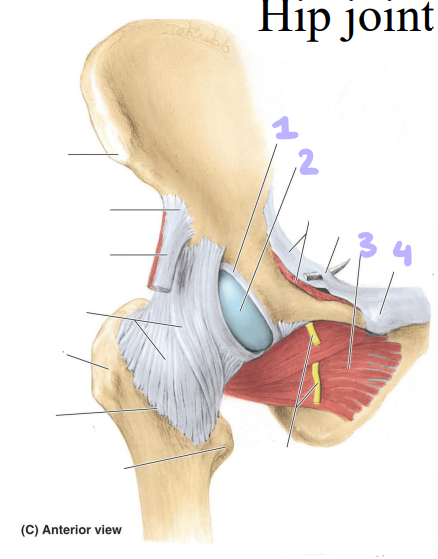
identify structures 1-4
acetabular labrum
head of femur
obturator externus
pubic tubercle
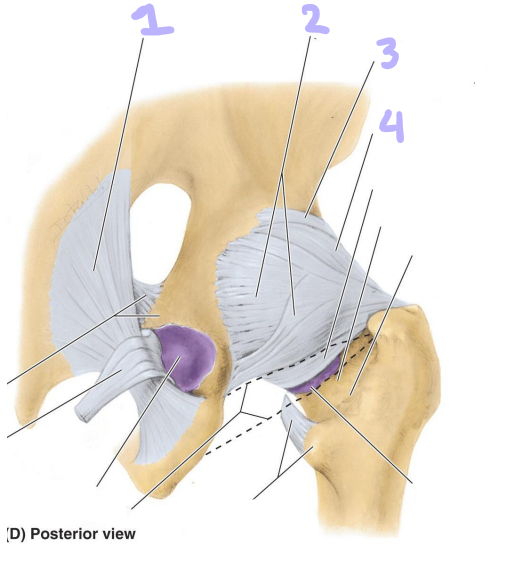
identify structures 1-4
sacrotuberous ligament
ischiofemoral ligament
rectus femoris (reflected head)
iliofemoral ligament

identify structures 1-5
orbicular zone
neck of femur
intertrochanteric crest
psoas major
lesser trochanter
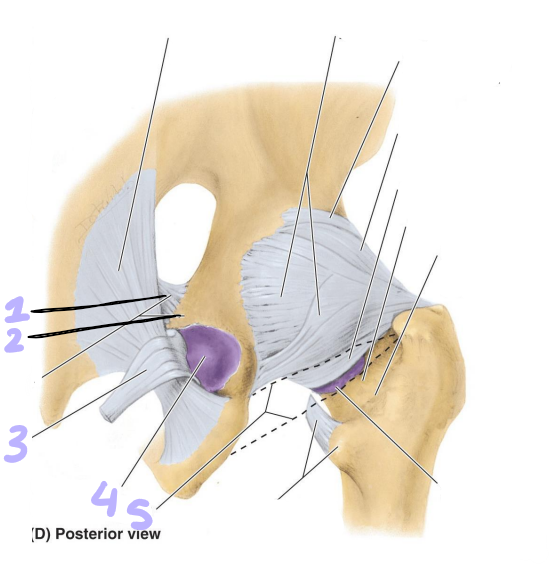
identify structures 1-5
sacrospinous ligament
ischial spine
obturator internus tendon (reflected)
obturator internus bursa
(course of) obturator externus
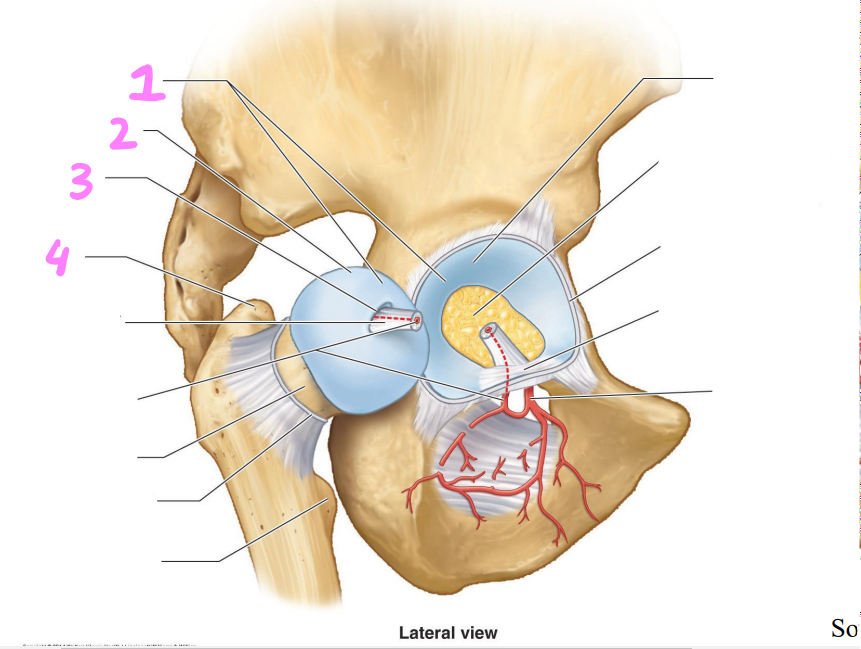
identify structures 1-4
articular cartilage
head of femur
fovea (for ligament of head of femur)
greater trochanter
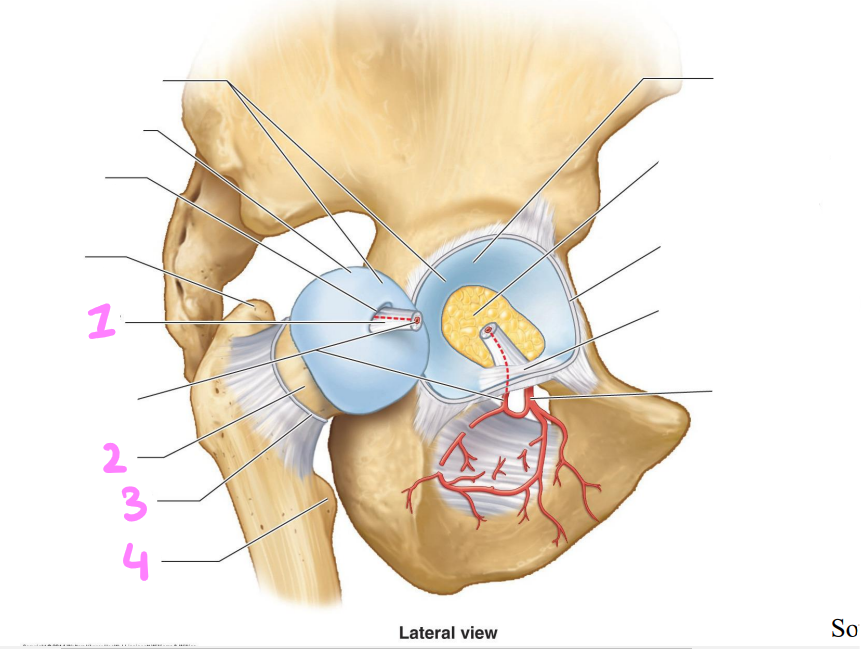
identify structures 1-4
ligament of head of femur
neck of femur
fibrous layer of joint capsule (cut)
lesser trochanter
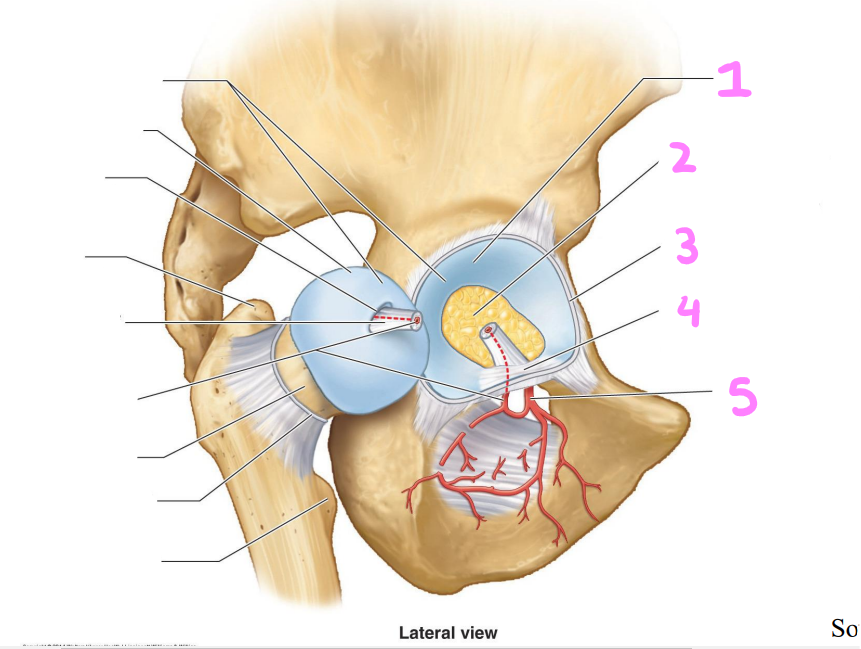
identify structures 1-5
lunate surface (of acetabulum)
fat pad (in acetabular fossa)
acetabular labrum
transverse acetabular ligament
obturator artery
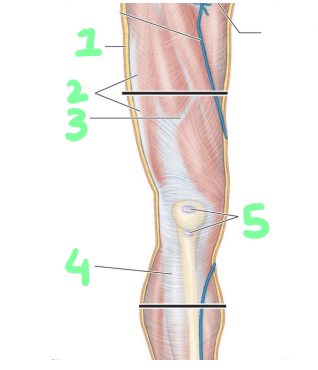
identify structures 1-5
subcutaneous tissue
iliotibial tract
fascia lata (part of deep fascia)
deep/crural fascia (part of deep fascia)
bursae
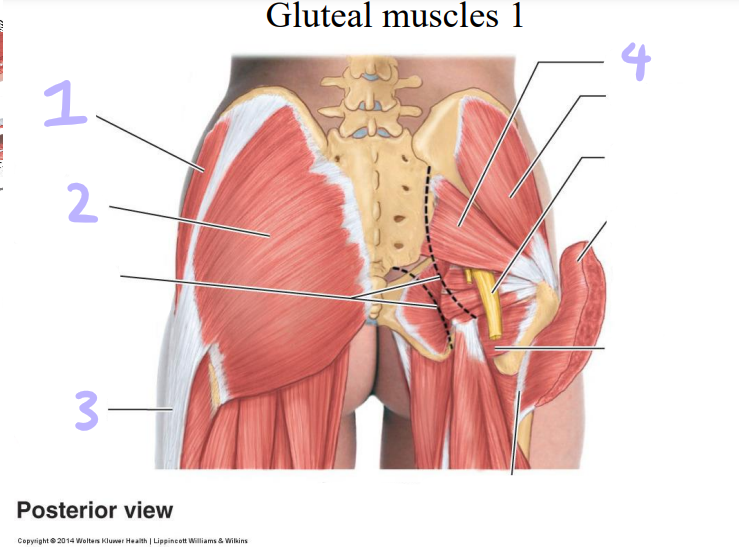
identify structures 1-4
tensor fasciae latae
gluteus maximus
iliotibial tract
piriformis
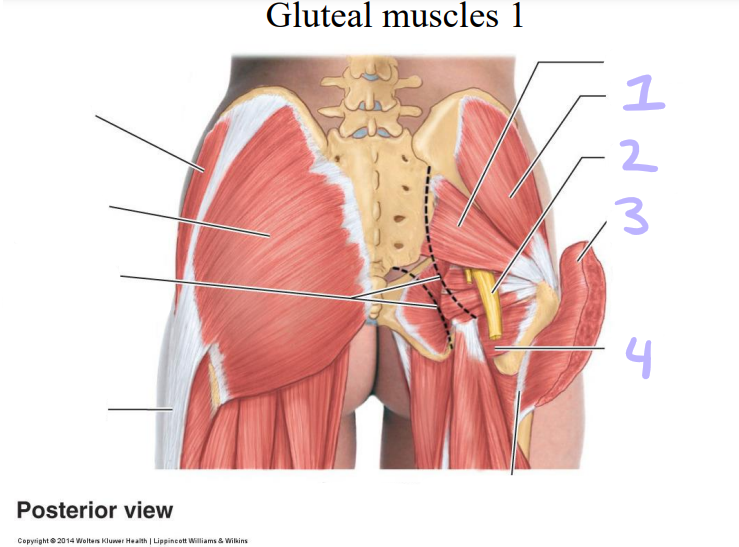
identify structures 1-4
gluteus medius
sciatic nerve
gluteus maximus (cut)
quadratus femoris
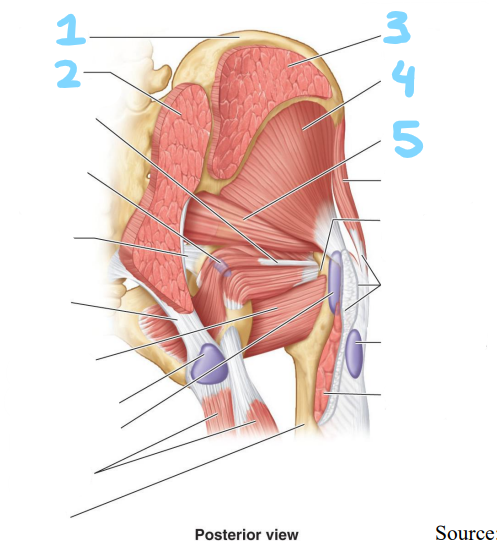
identify structures 1-5
iliac crest
gluteus maximus (cut)
gluteus medius (cut)
gluteus minimus (cut)
piriformis
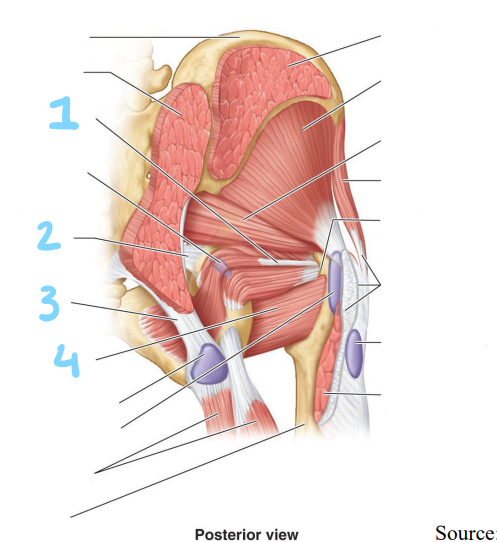
identify structures 1-4
tendon of obturator internus
sacrospinous ligament
sacrotuberous ligament
quadratus femoris
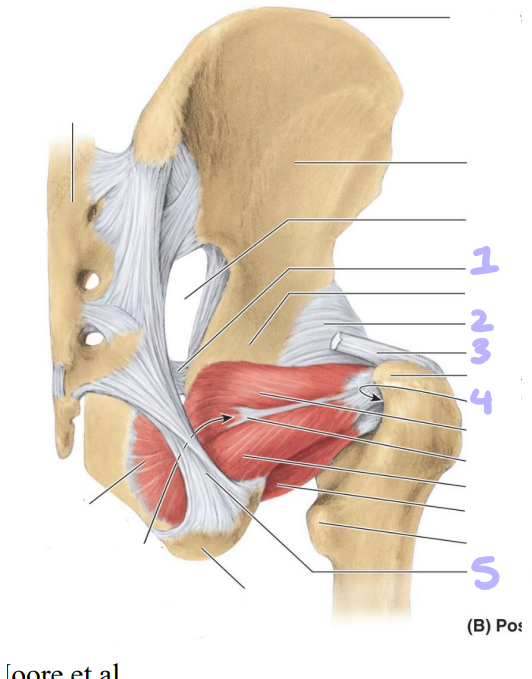
identify structures 1-5
sacrospinous ligament
capsule of hip joint
tendon of piriformis
trochanteric fossa
sacrotuberous ligament
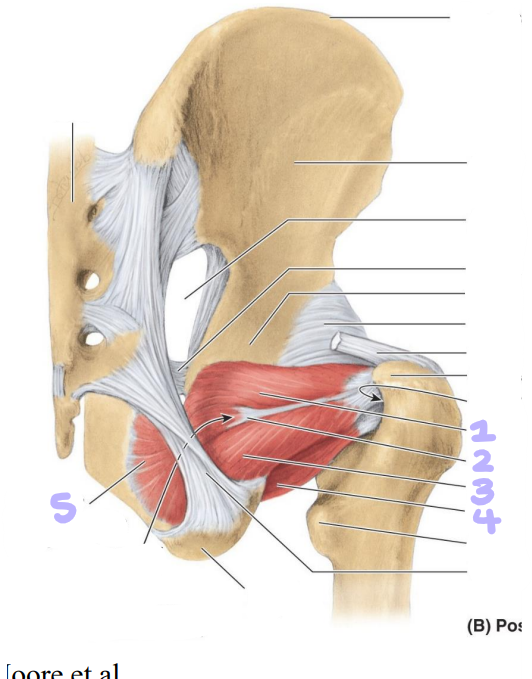
identify structures 1-5
superior gemellus
obturator internus
inferior gemellus
obturator externus
obturator internus (inside pelvis)
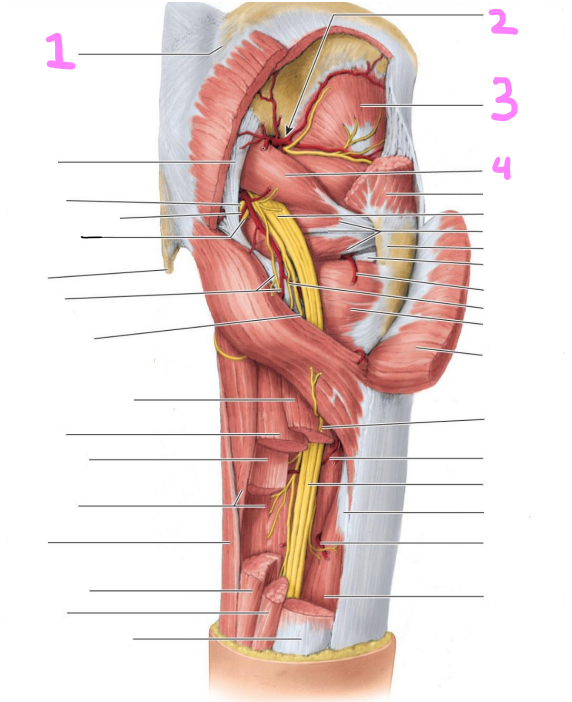
identify structures 1-4?
posterior superior iliac spine (PSIS)
superior gluteal artery and nerve
gluteus minimus
piriformis

identify structures 1-4
gluteus medius
sciatic nerve
obturator internus and gemelli
obturator externus
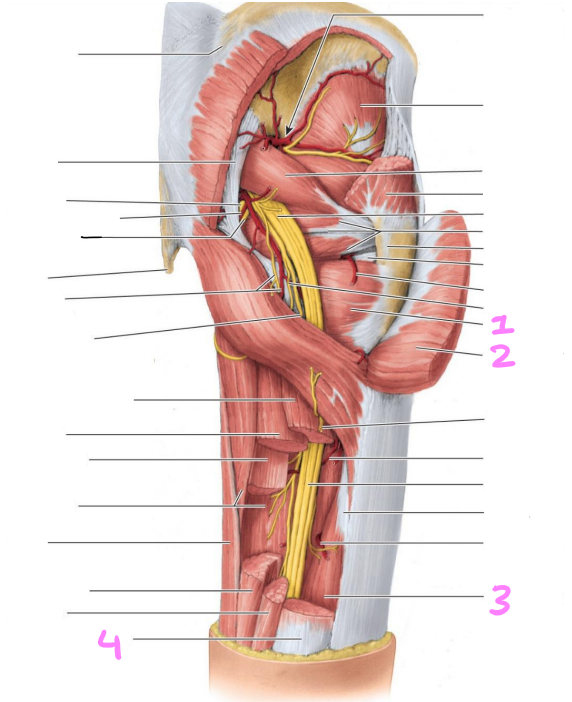
identify structures 1-4
quadratus femoris
gluteus maximus
biceps femoris, short head
biceps femois, long head

identify structures 1-5
sacrotuberous ligament
inferior gluteal nerve and artery
biceps femoris, long head
semitendinosus
semimembranosus
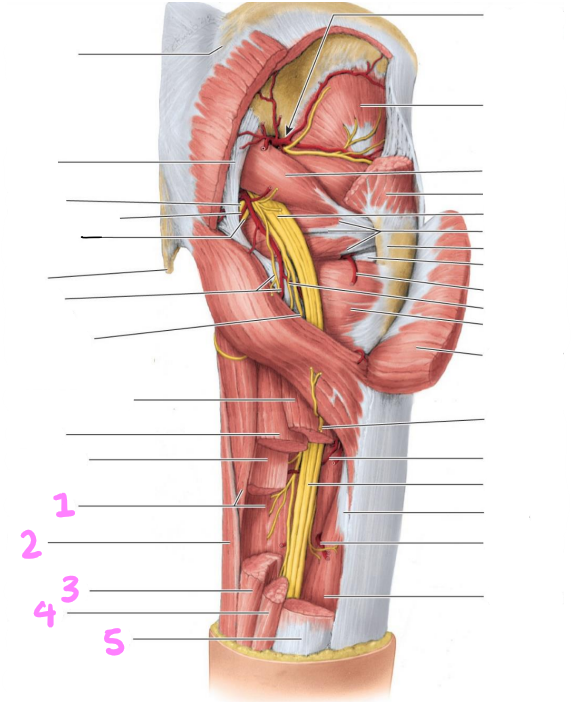
identify structures 1-5
adductor magnus
gracilis
semimembranosus
semitendinosus
biceps femoris, long head
flexors cross ___________ to the hip joint
anterior
extensors cross _________ to the hip joint
posterior
abductors cross _________ to the hip joint
lateral
adductors cross _______ to the hip joint
medial
medial rotators cross ________ and _________ to the hip joint
anterior and horizontal
lateral rotators cross _______ to the hip joint
oblique
flexor muscle(s) of the hip:
iliopsoas
extensor muscle(s) of the hip:
gluteus maximus